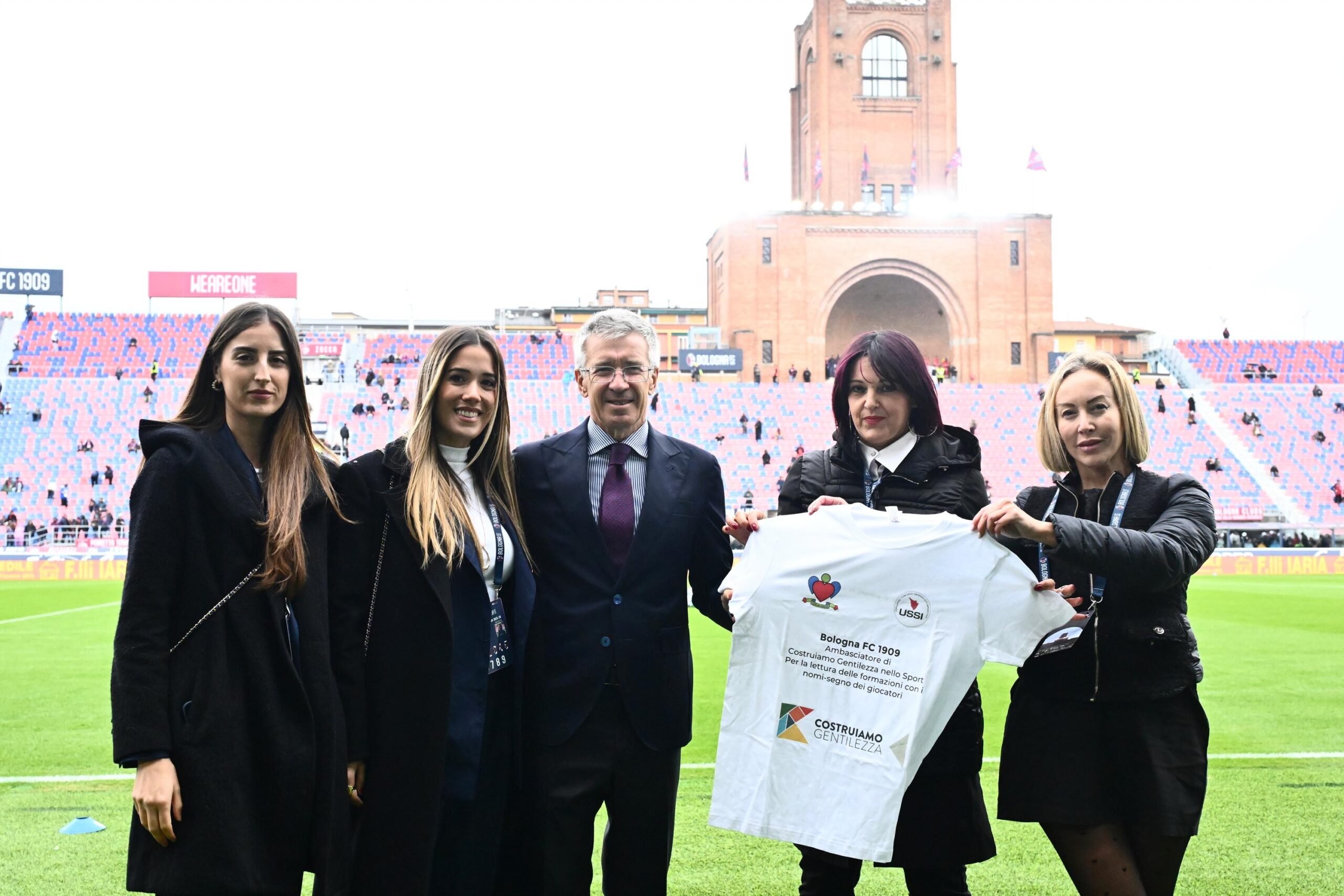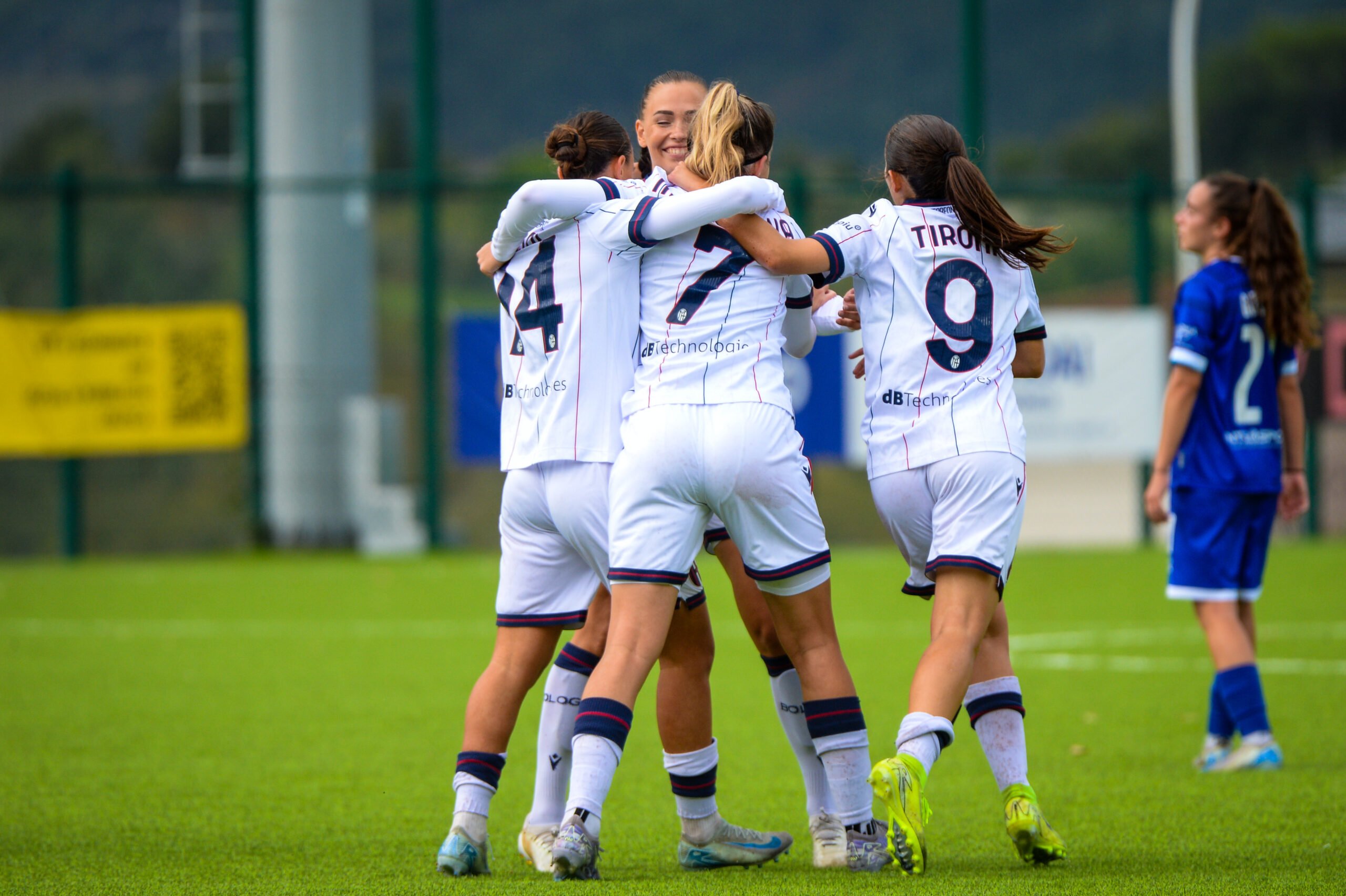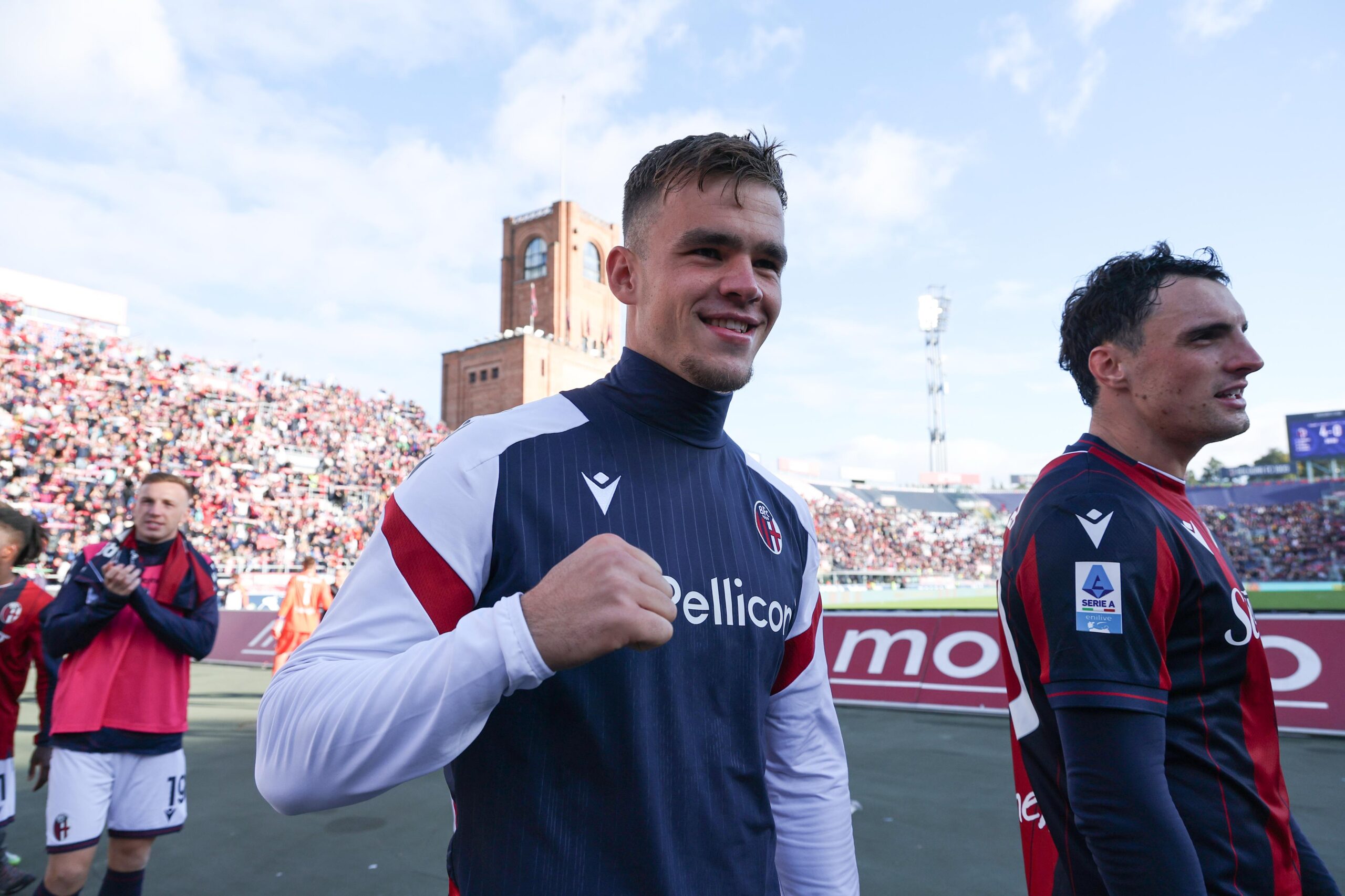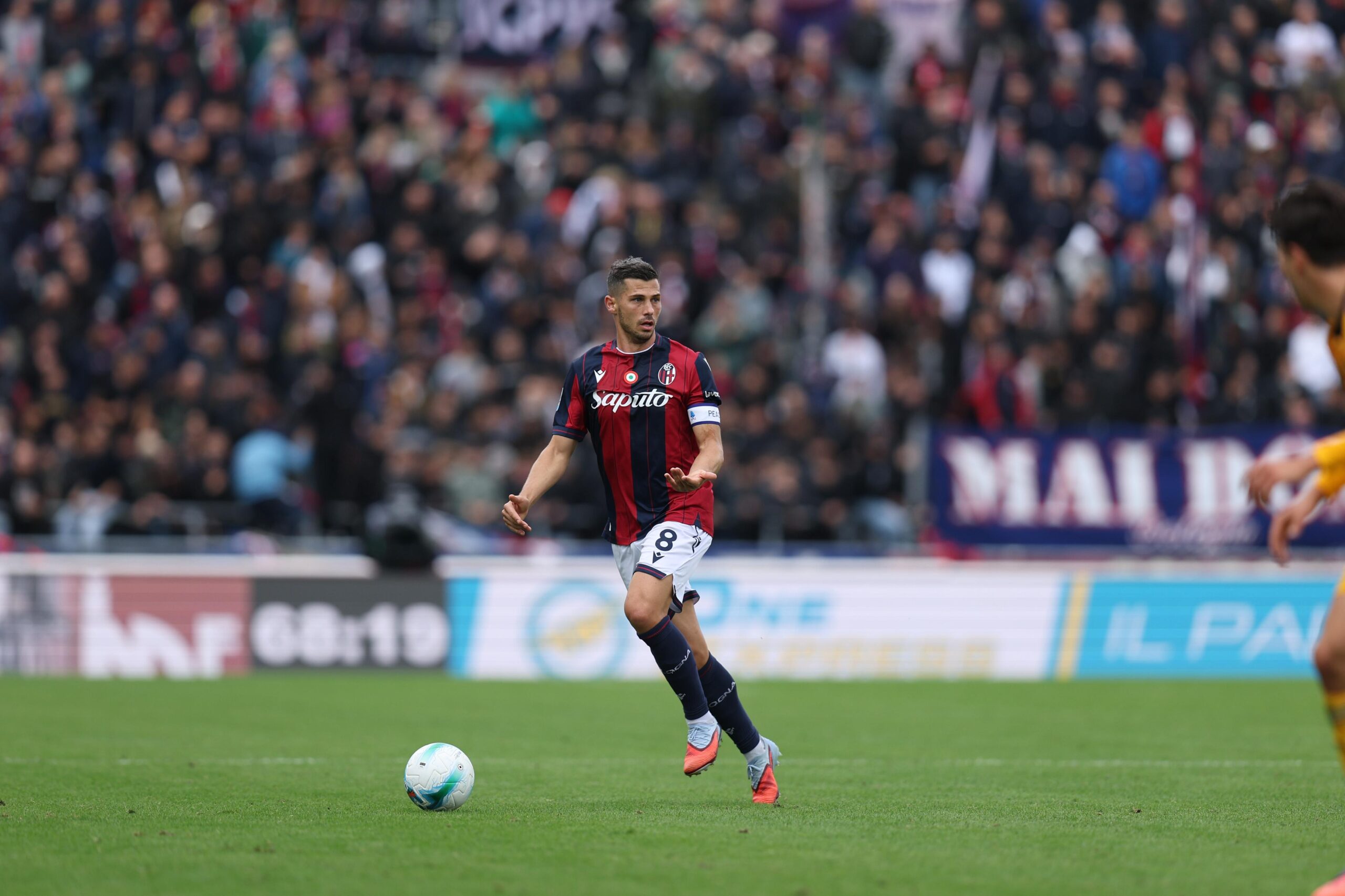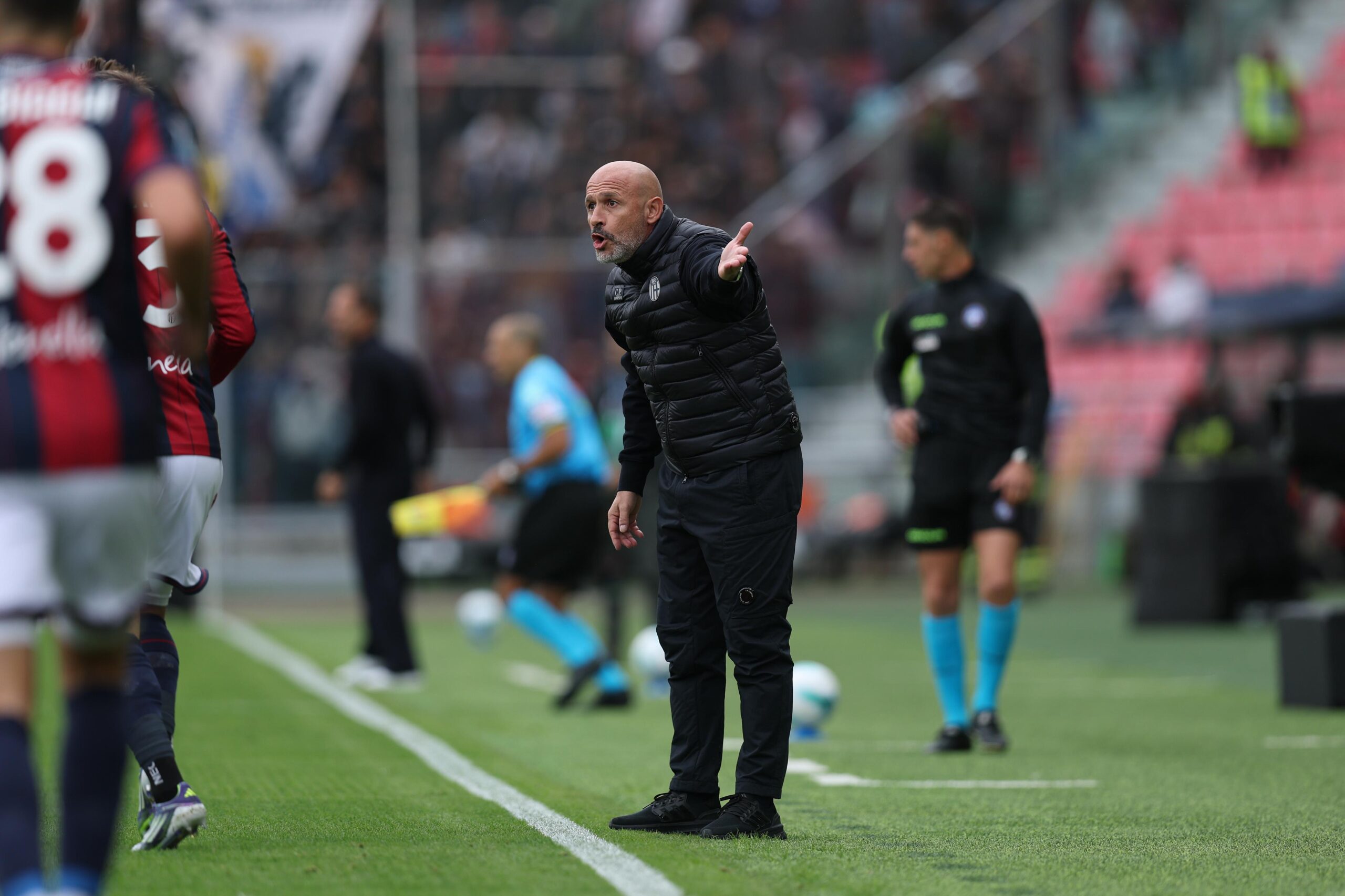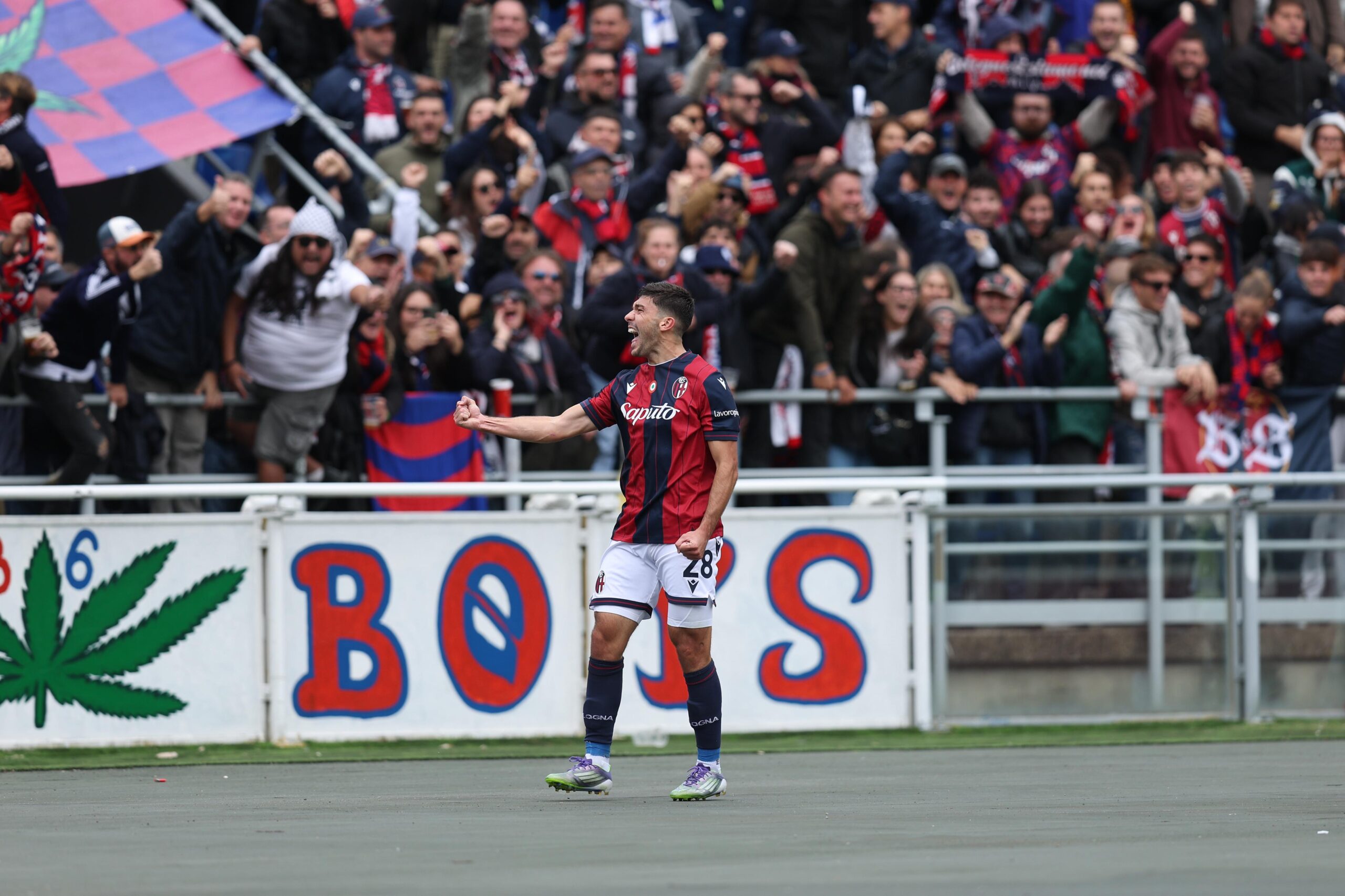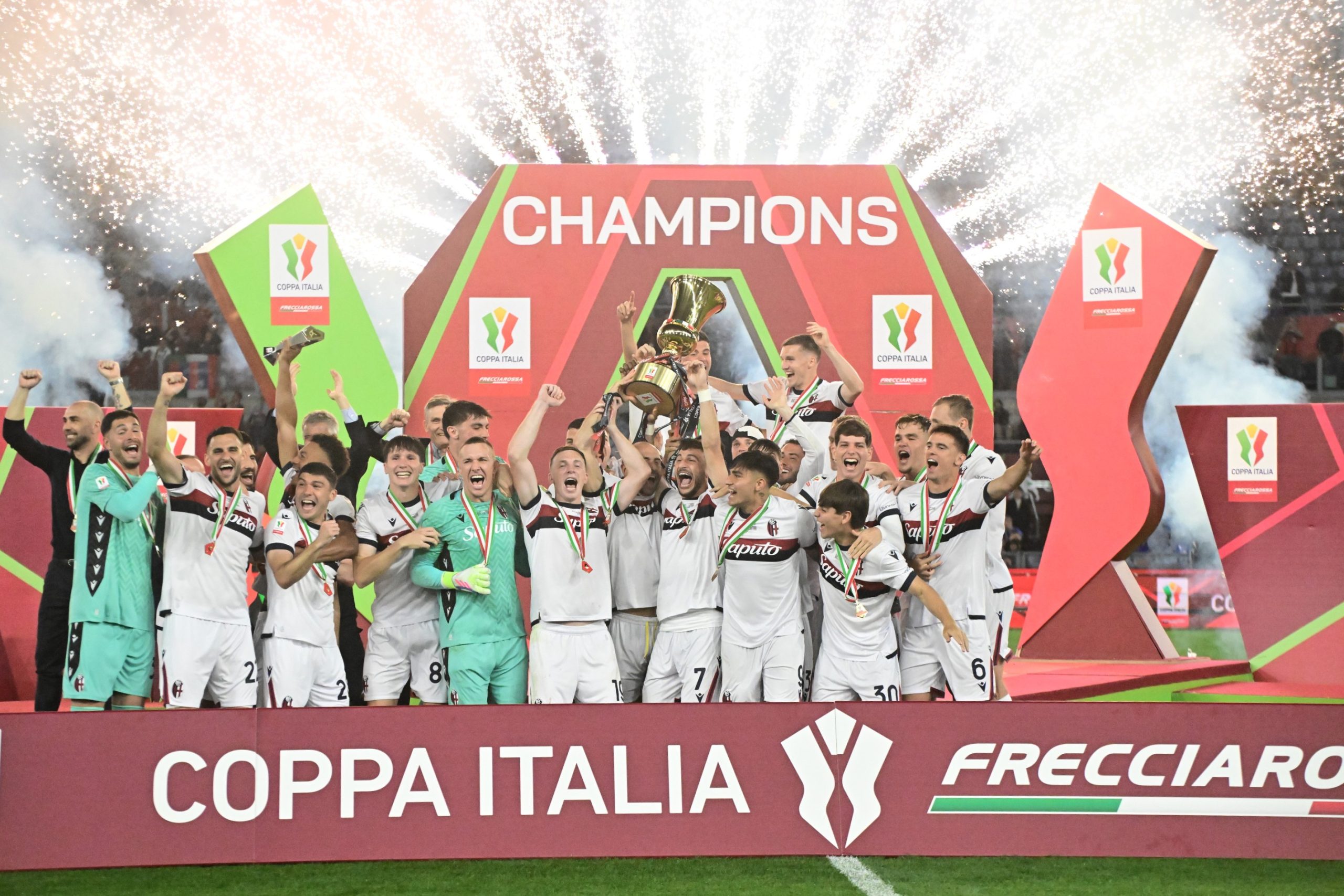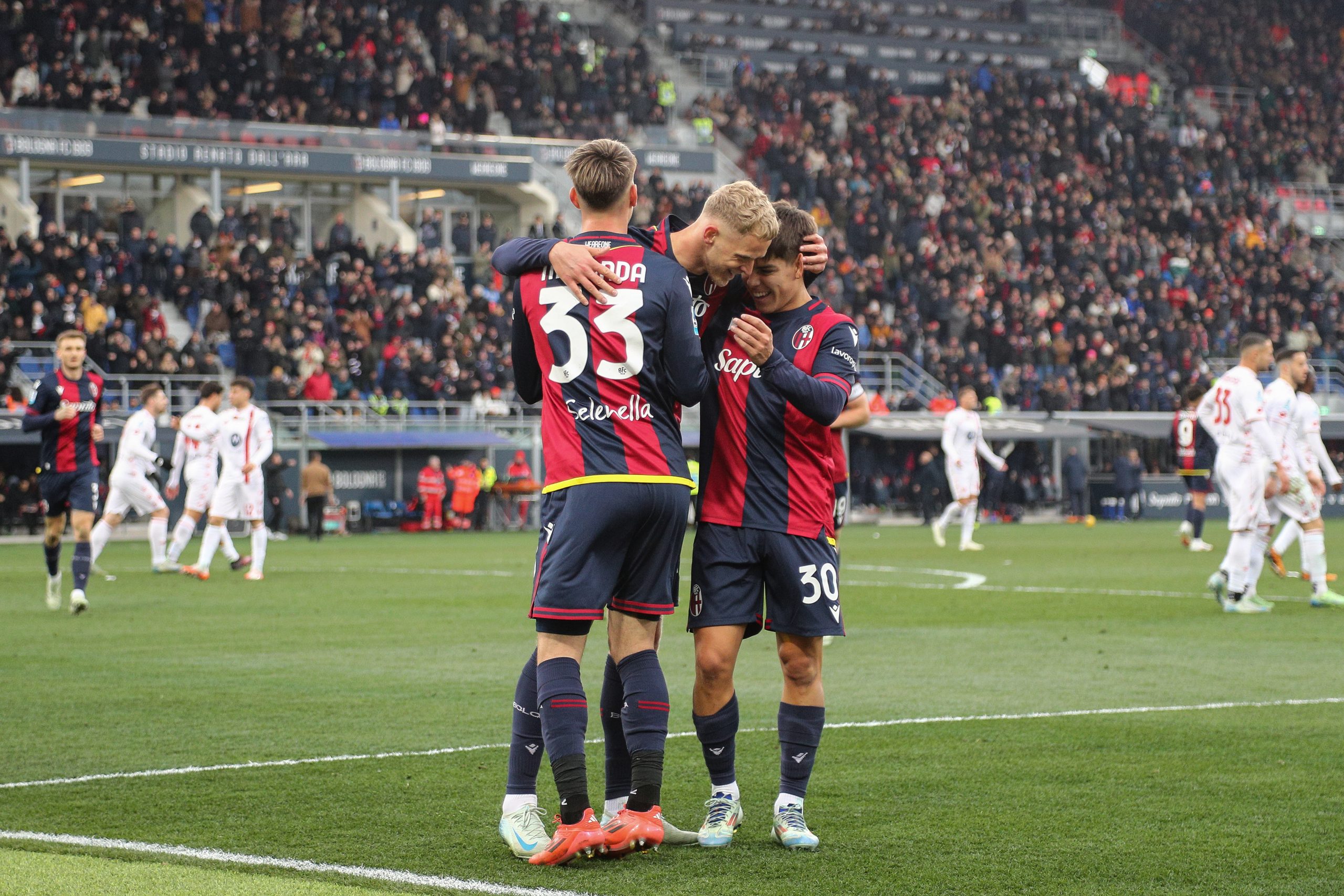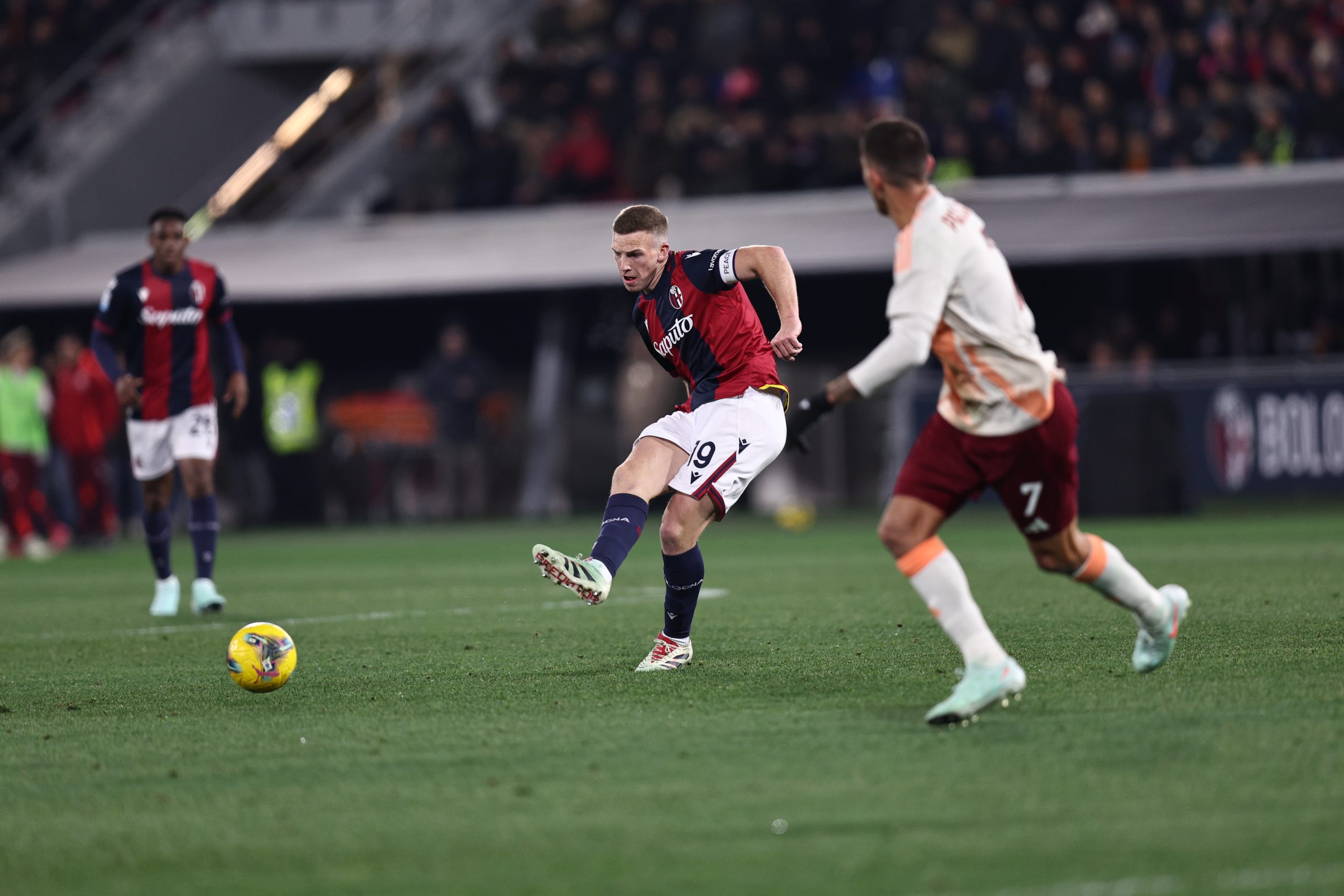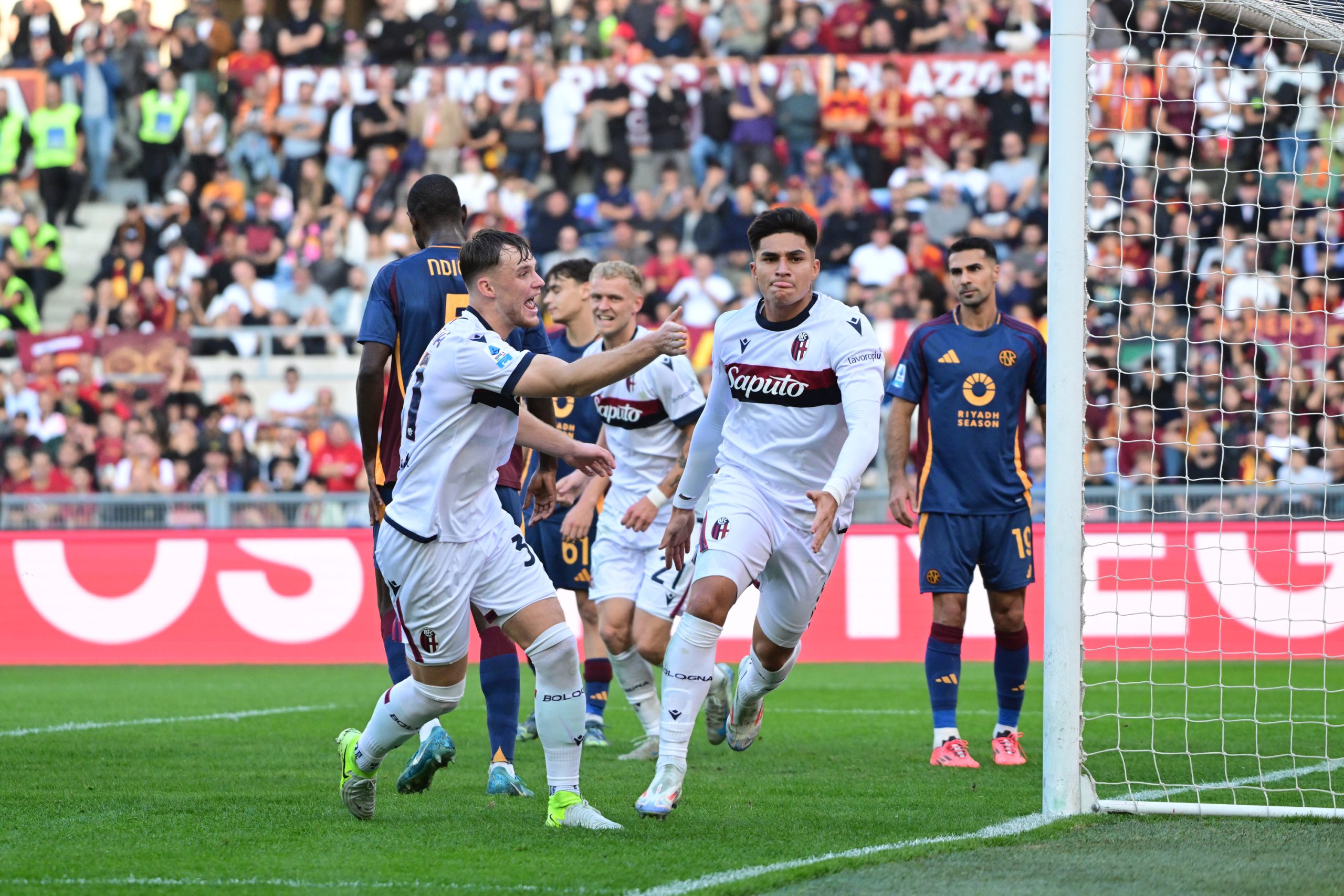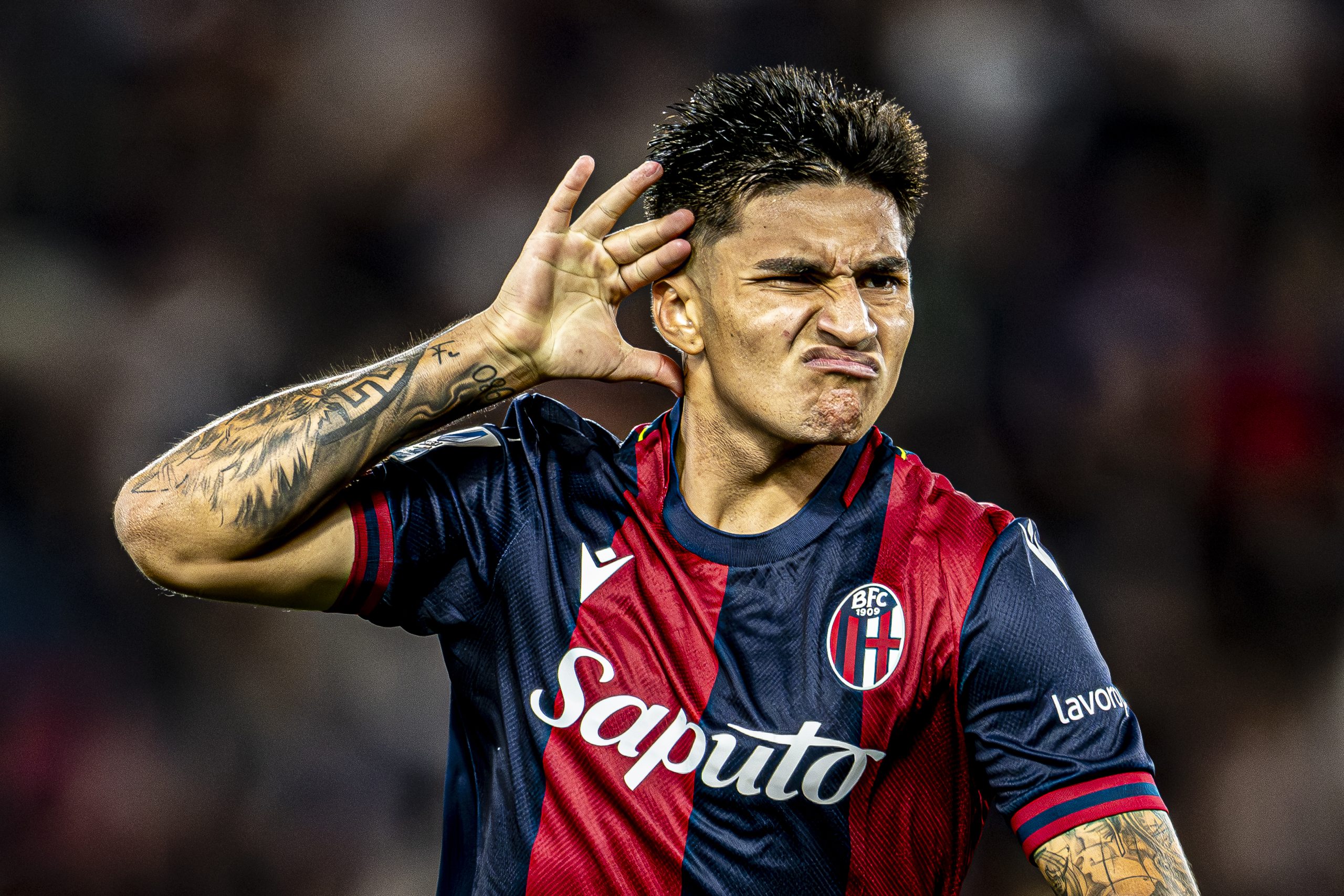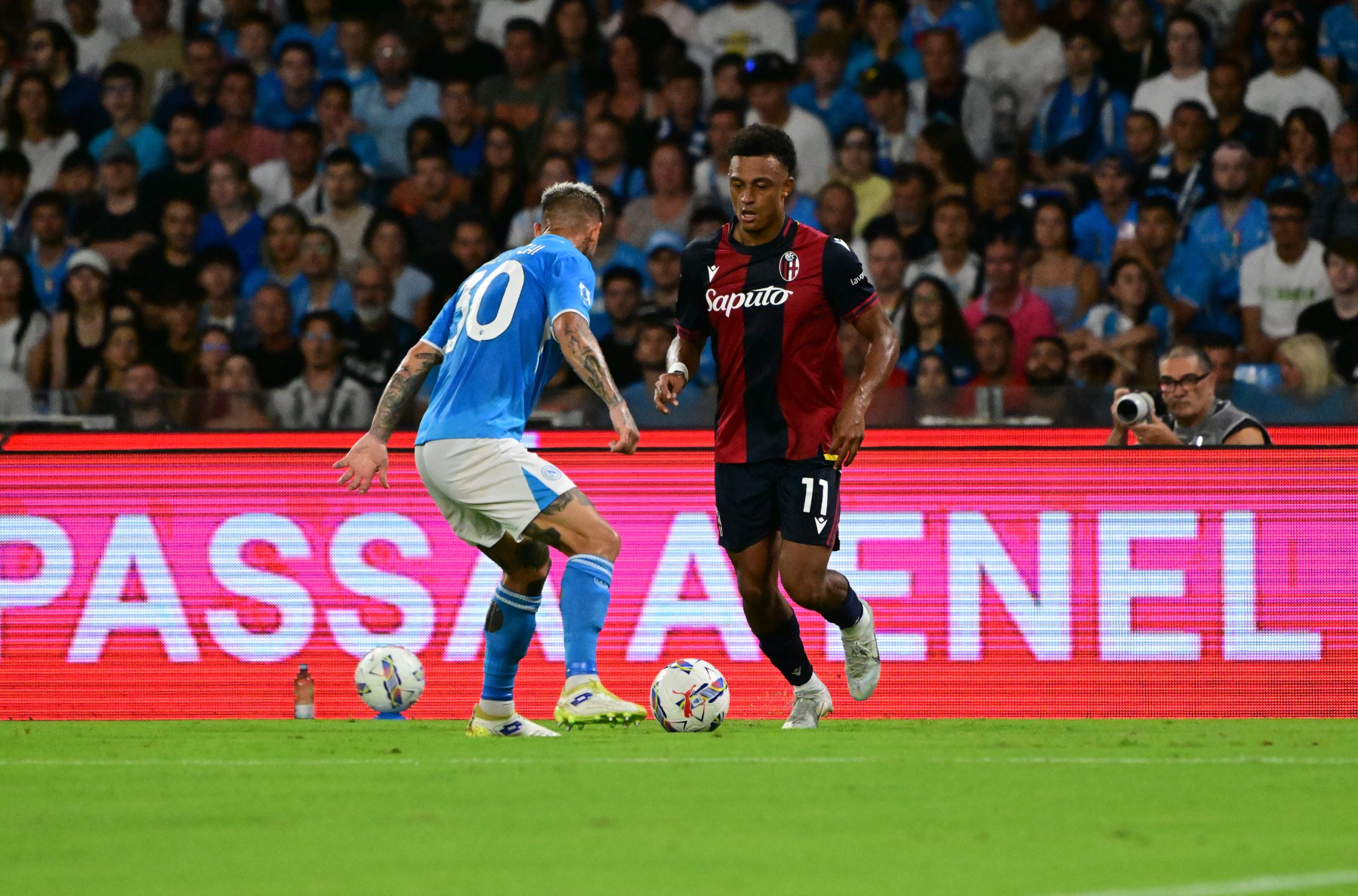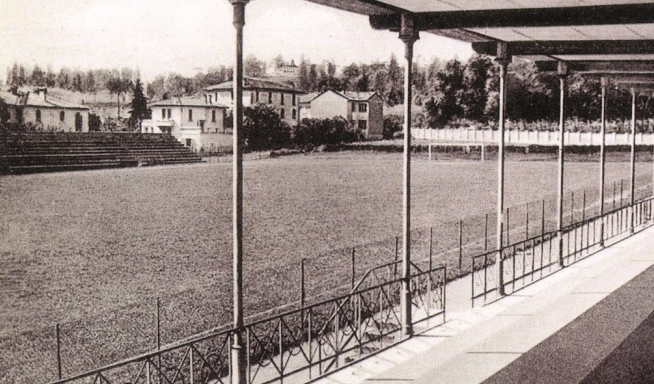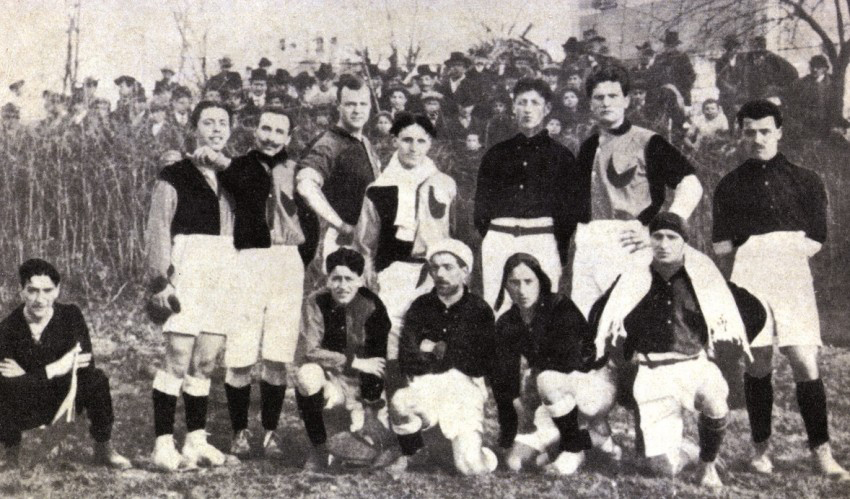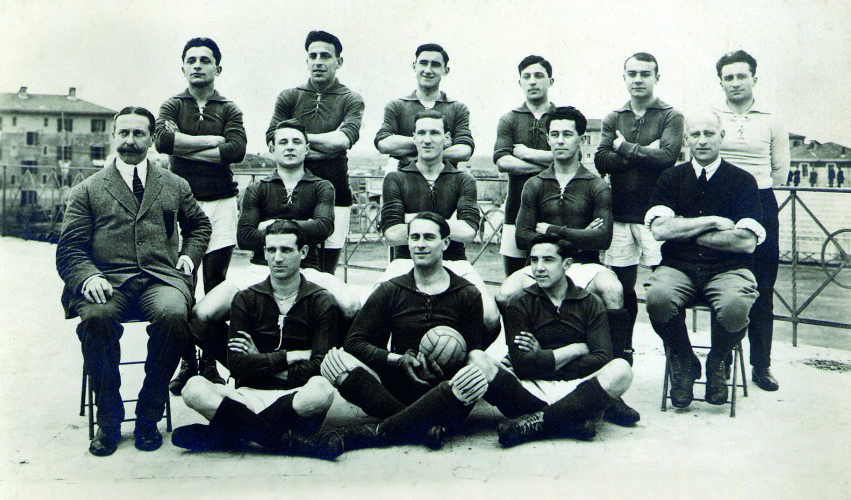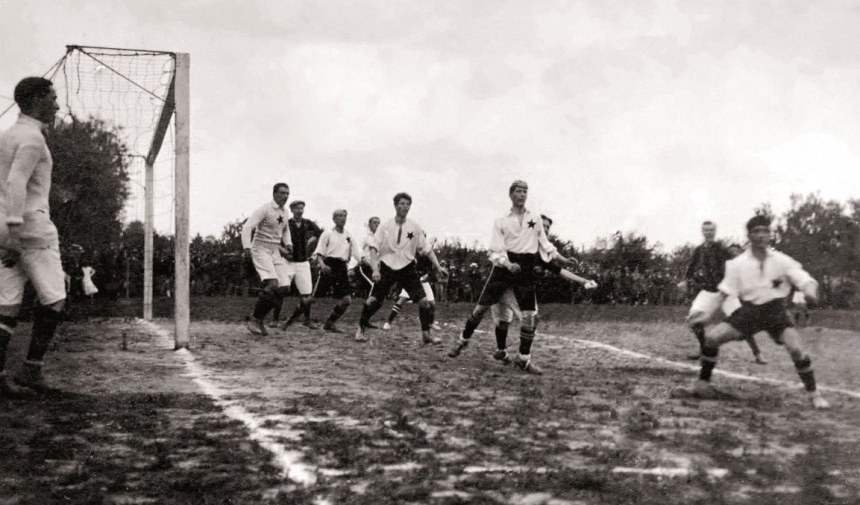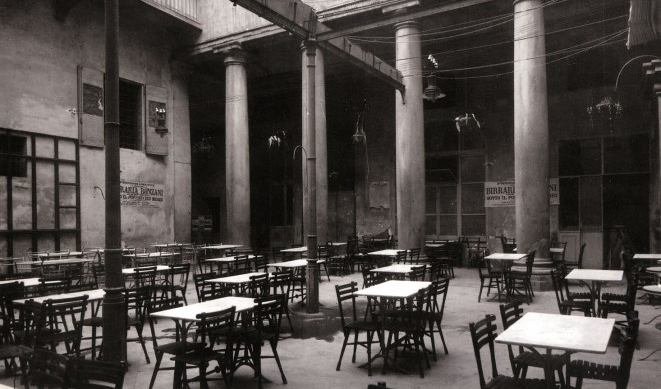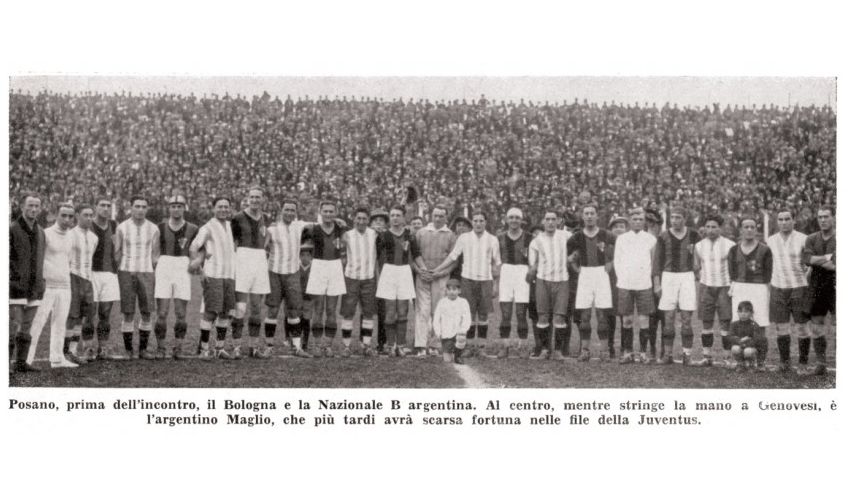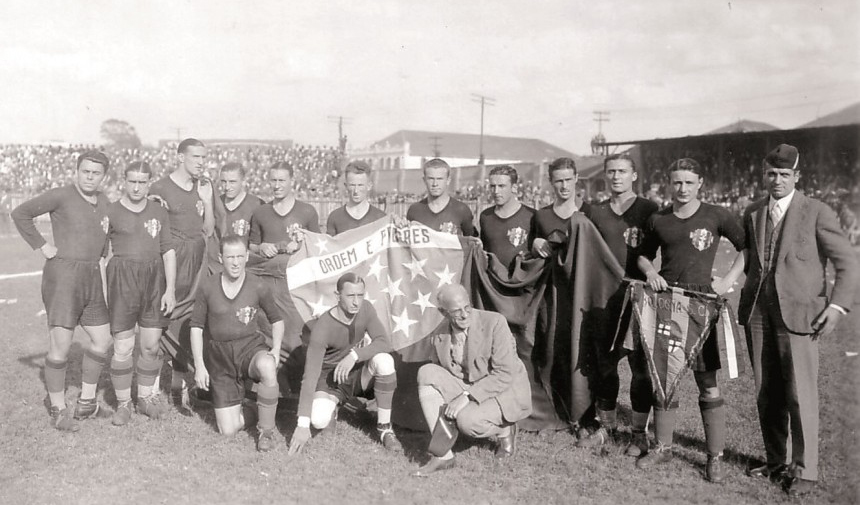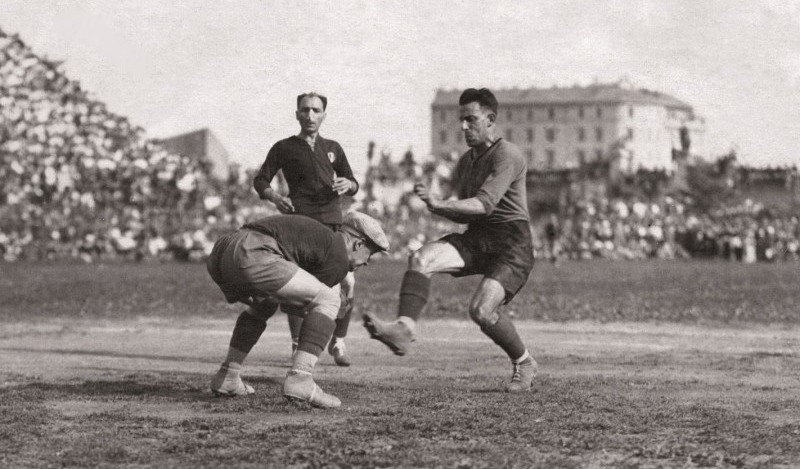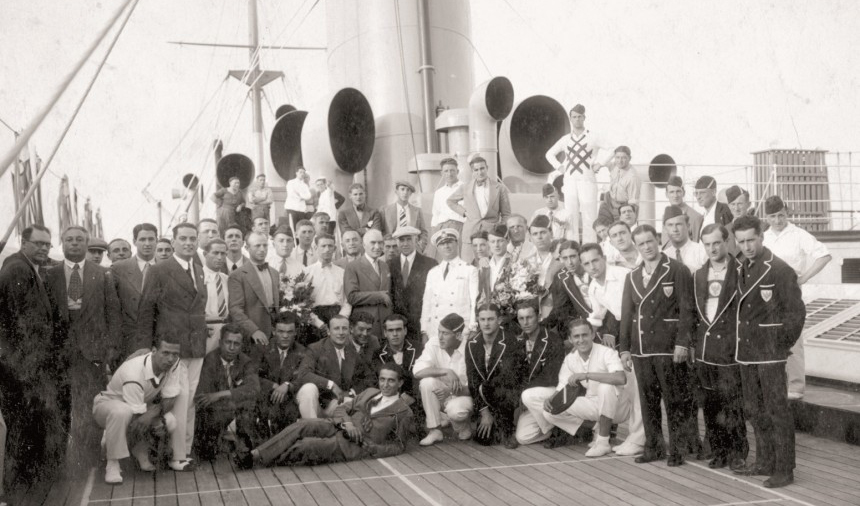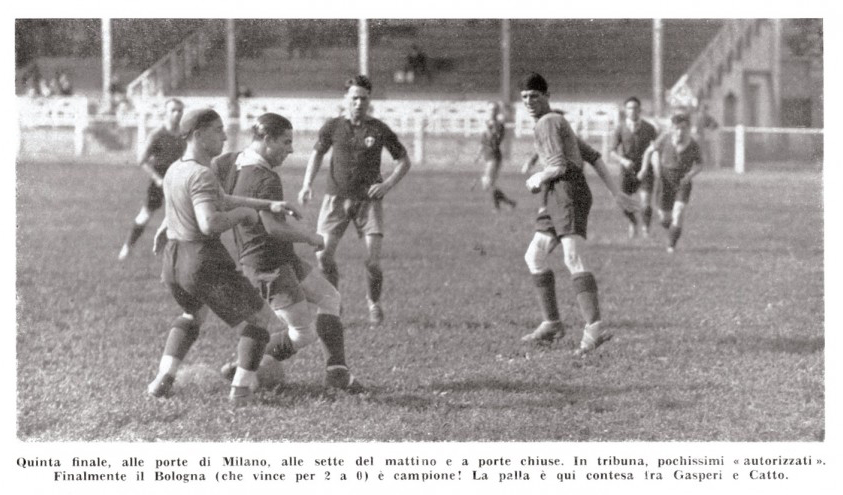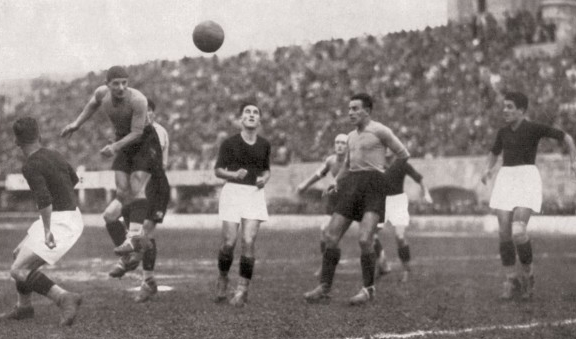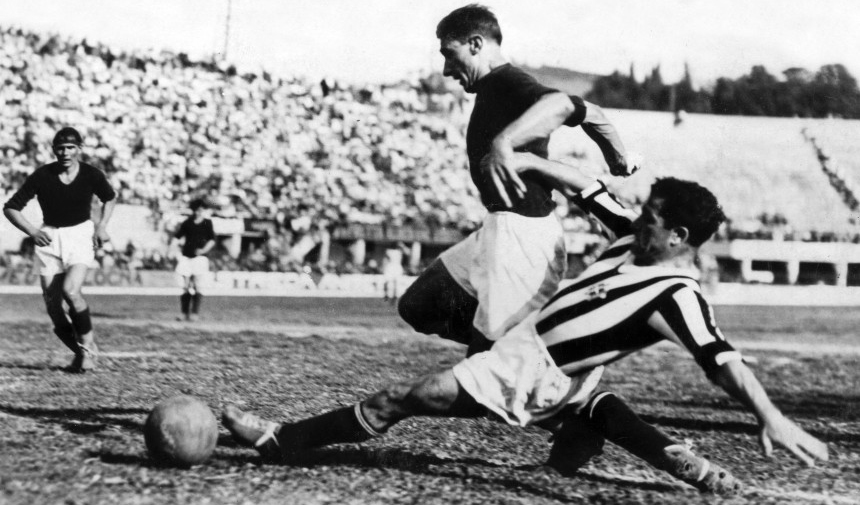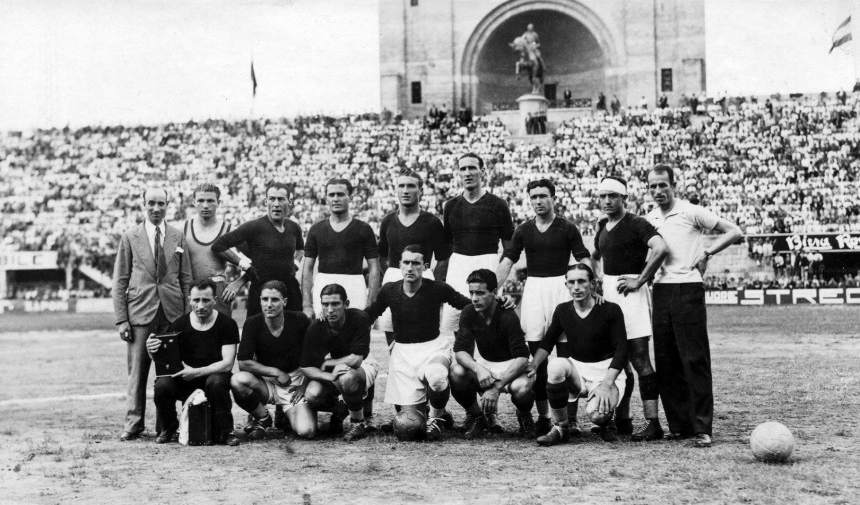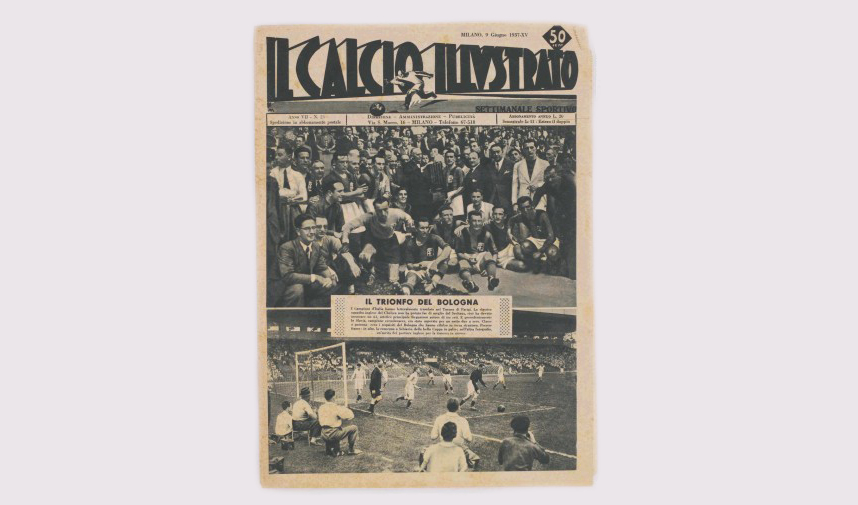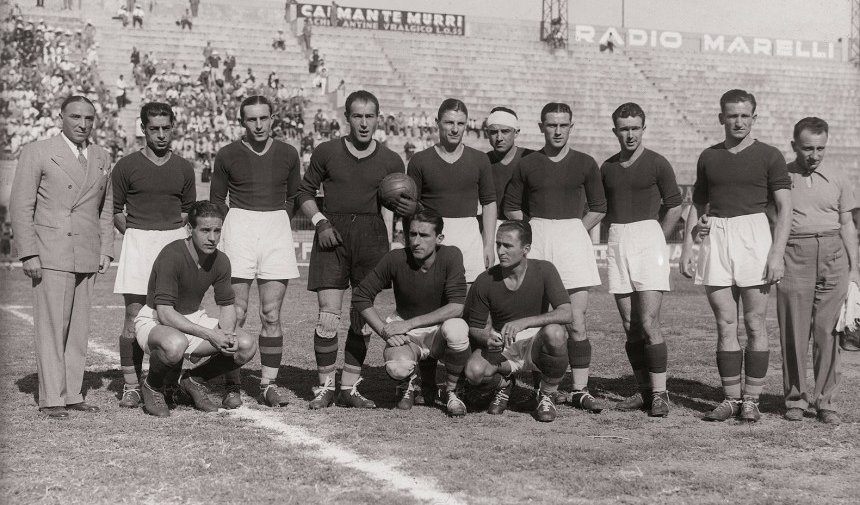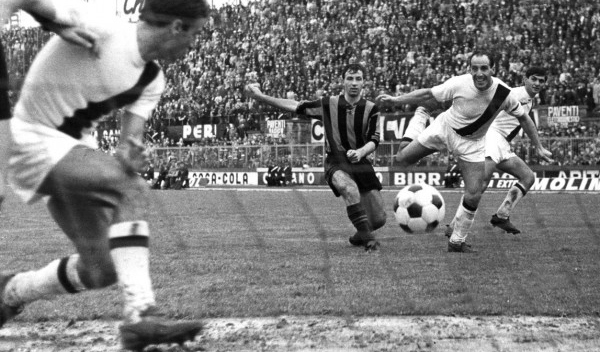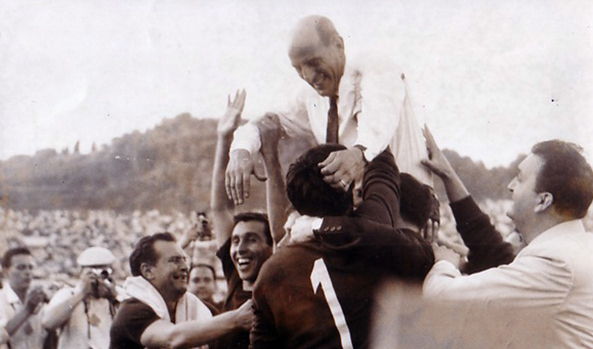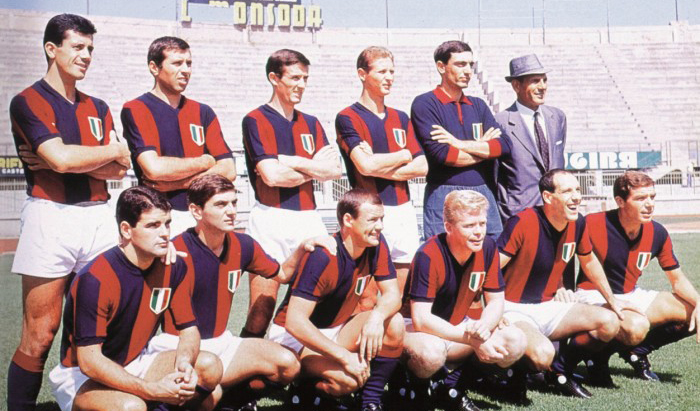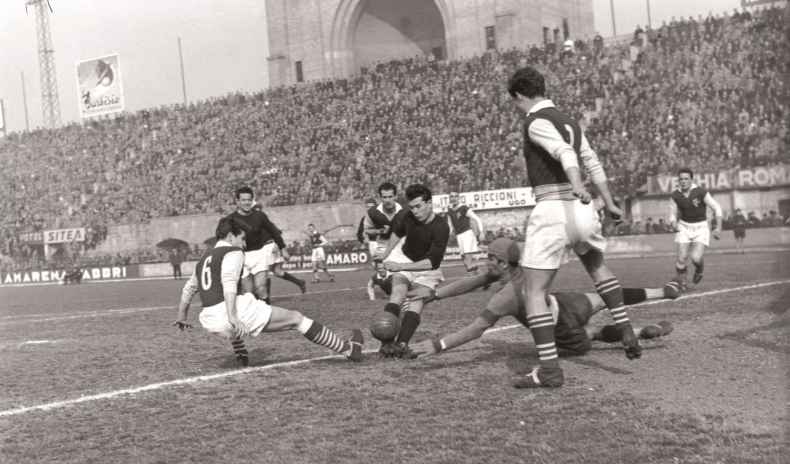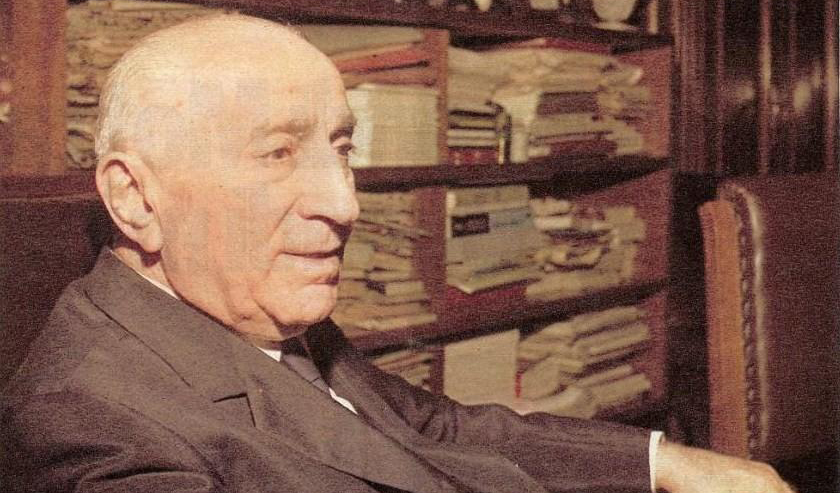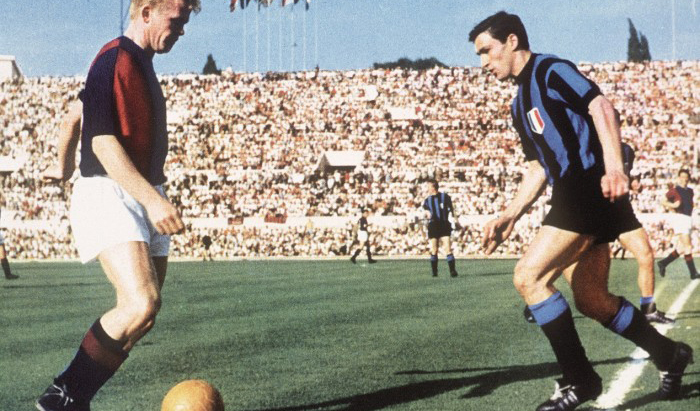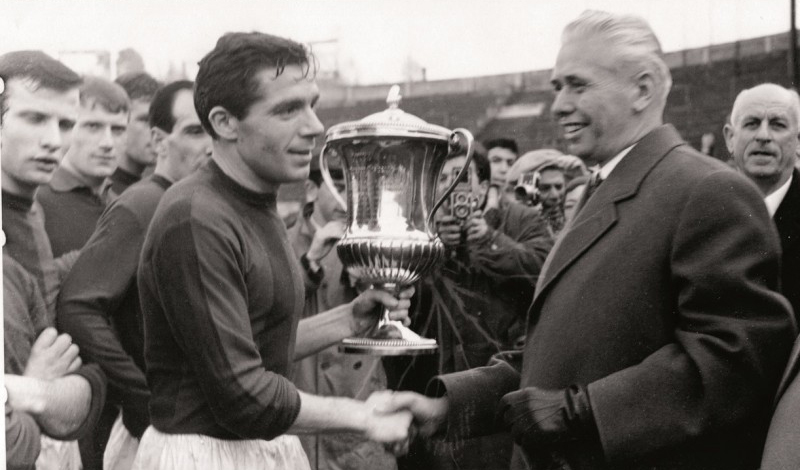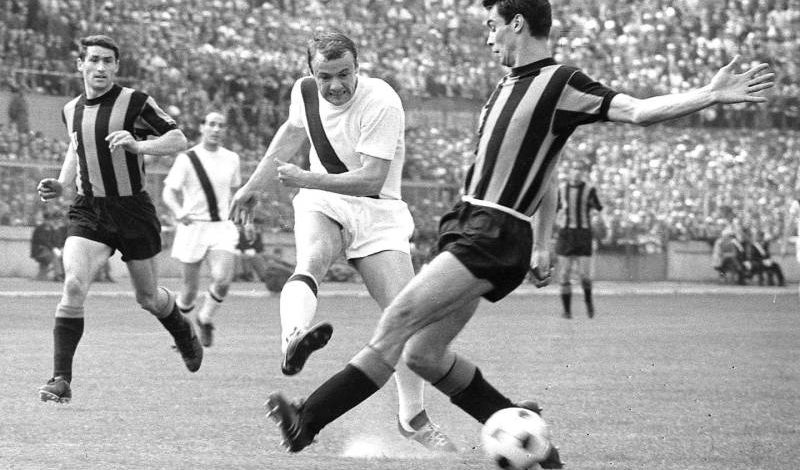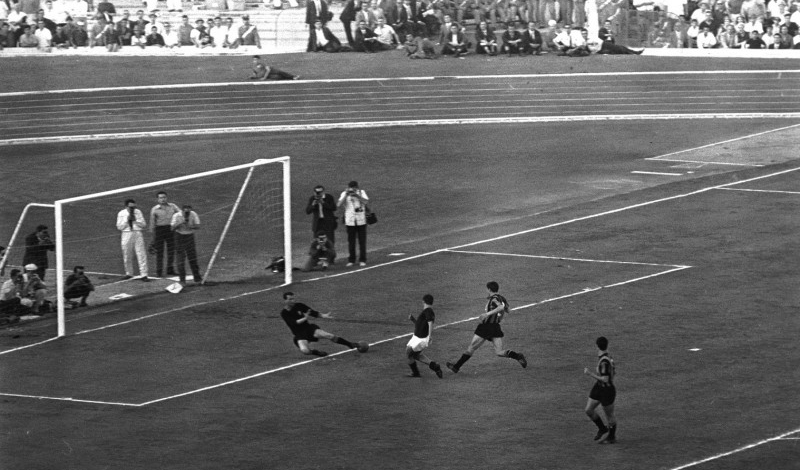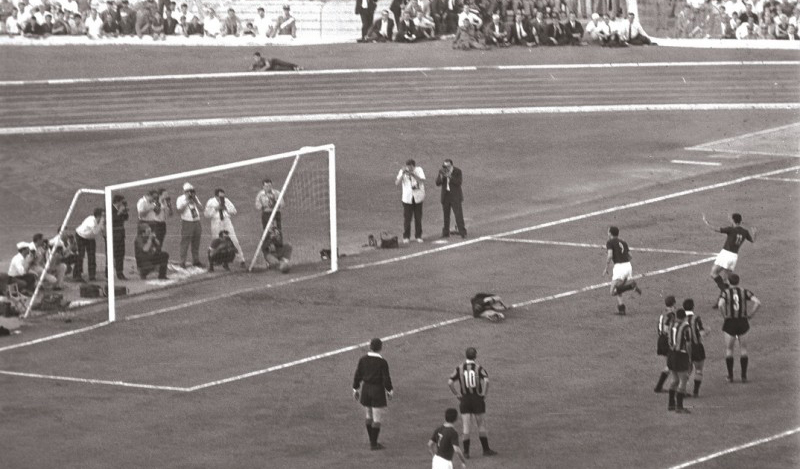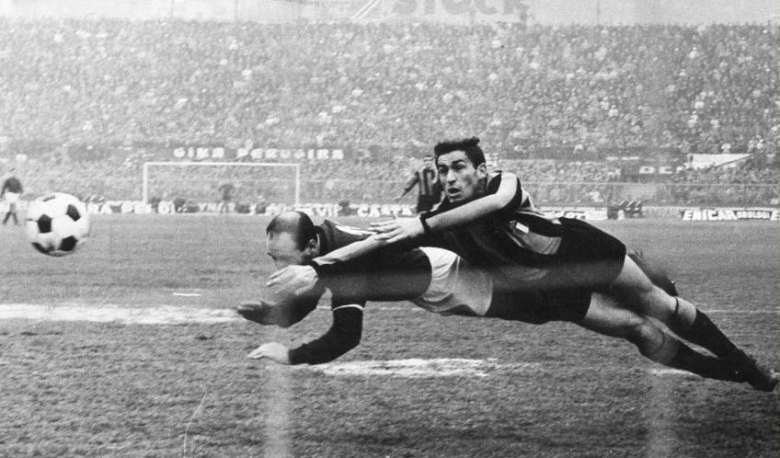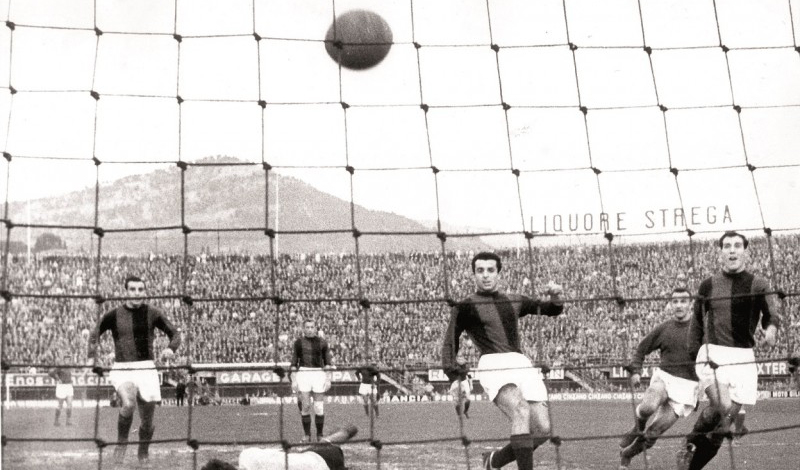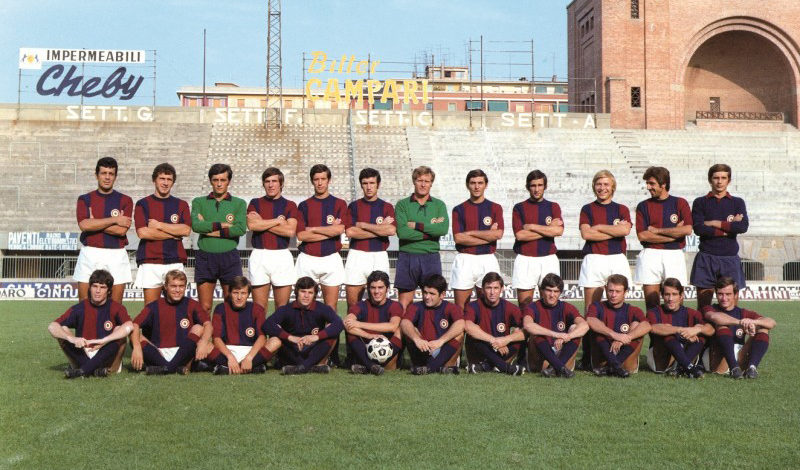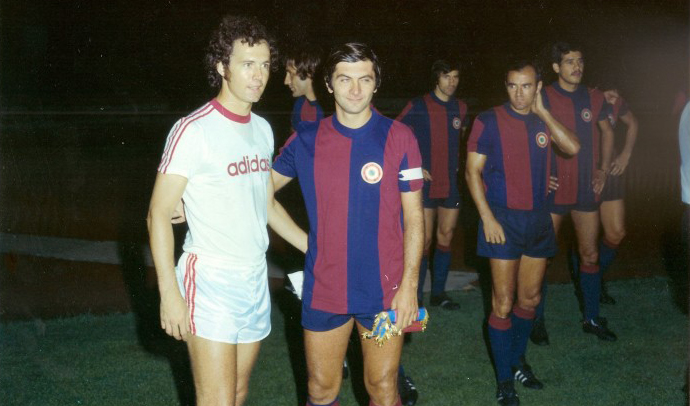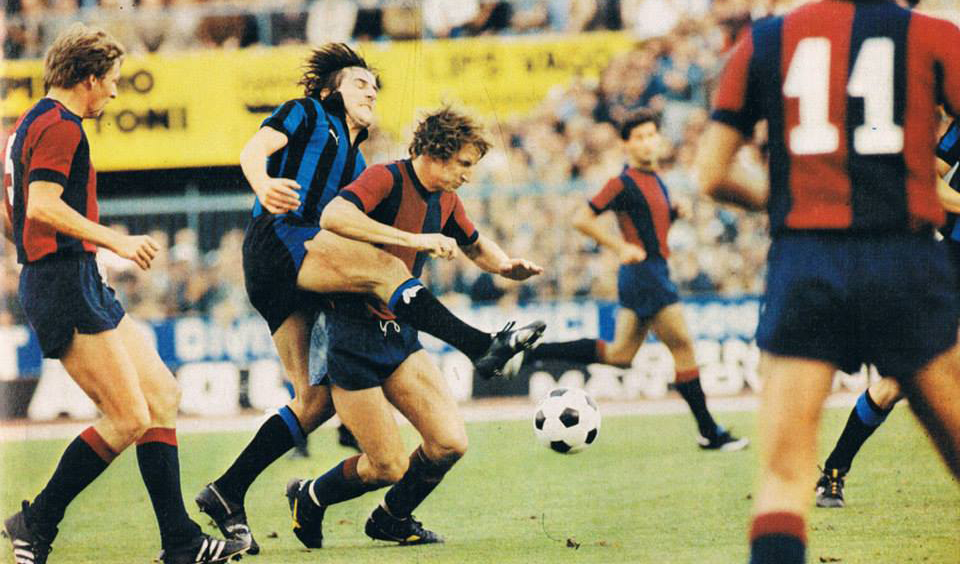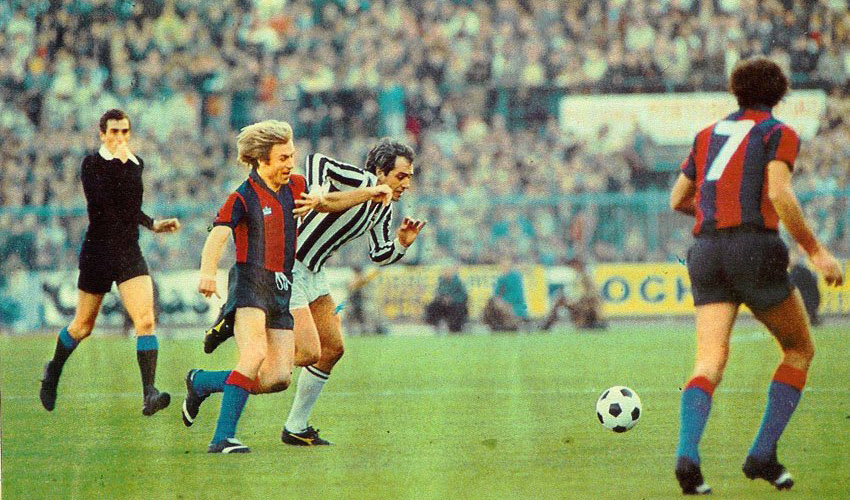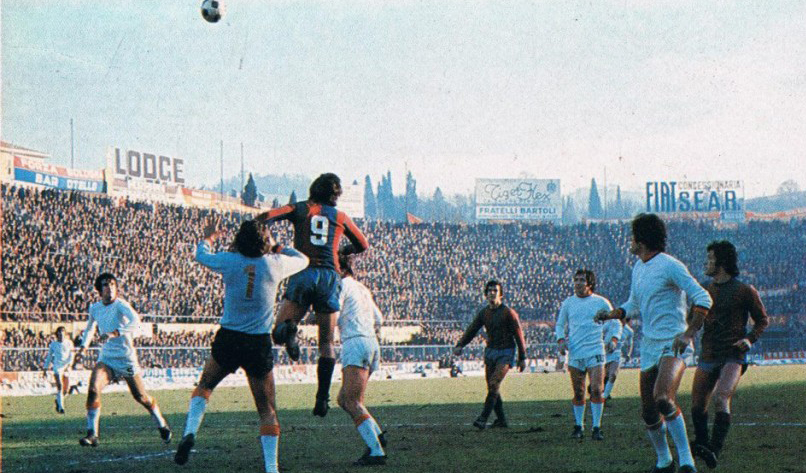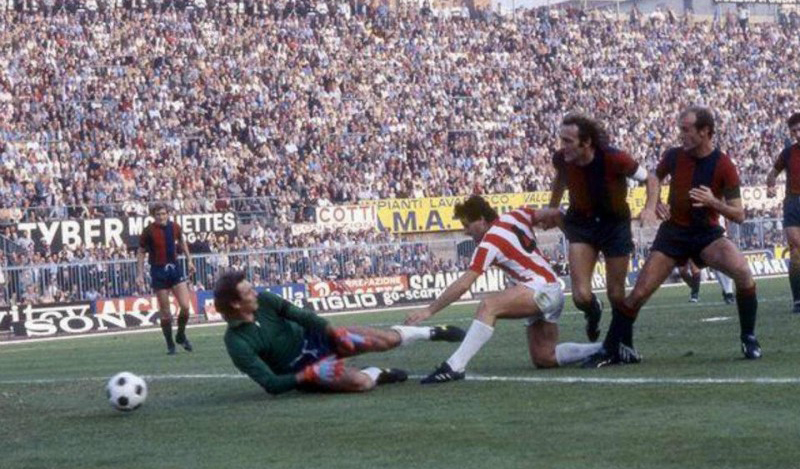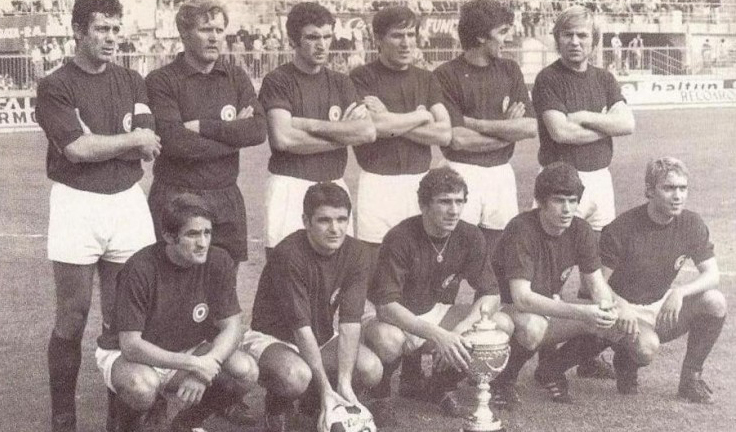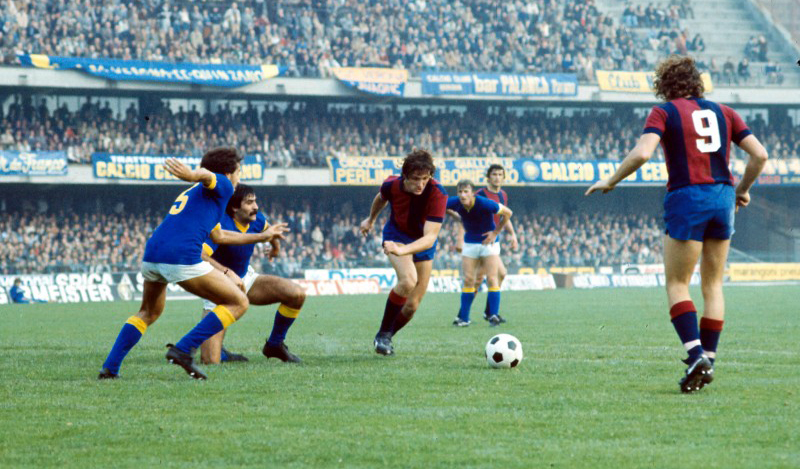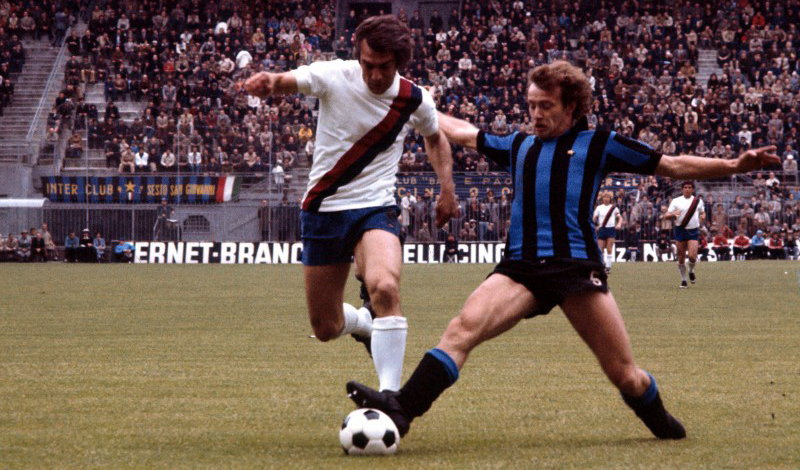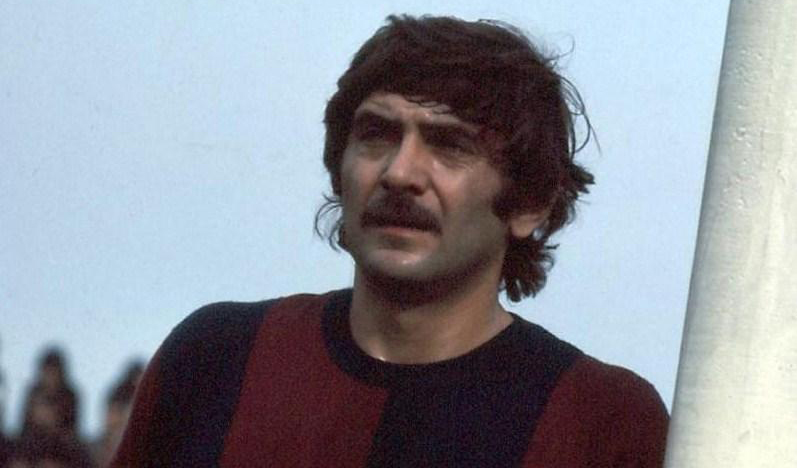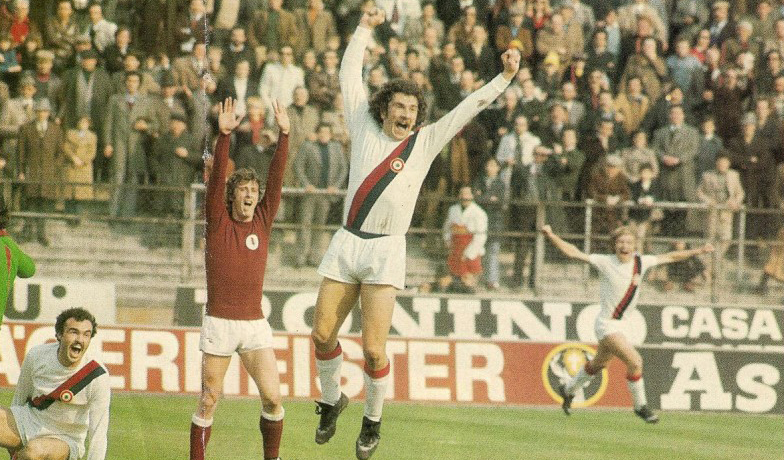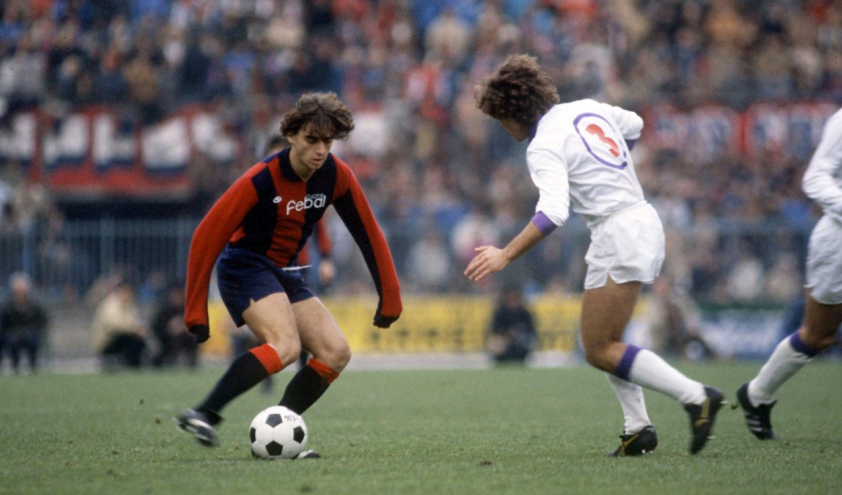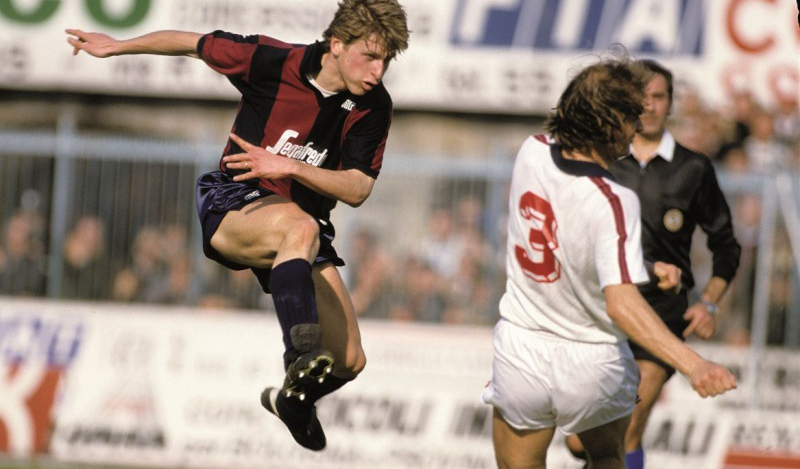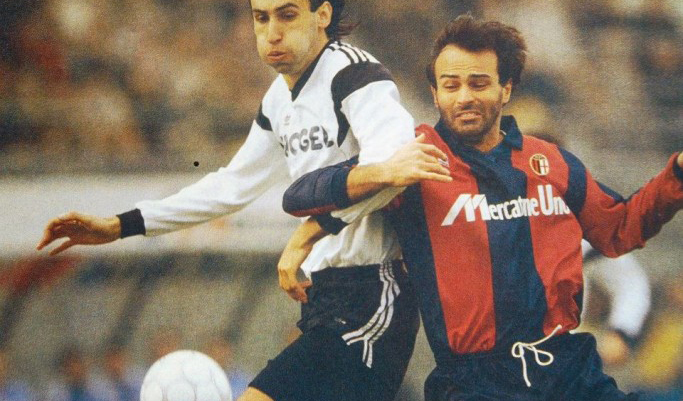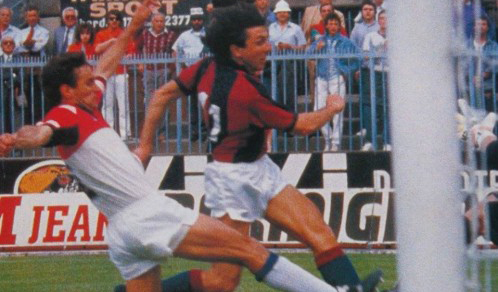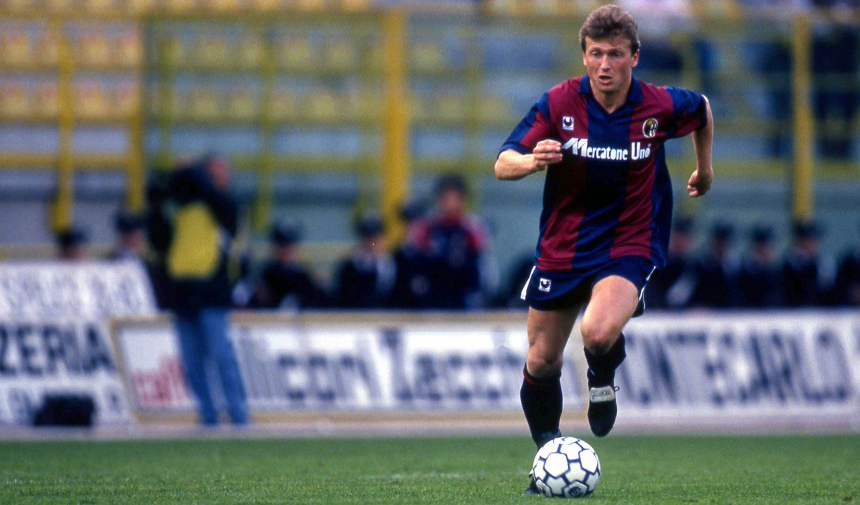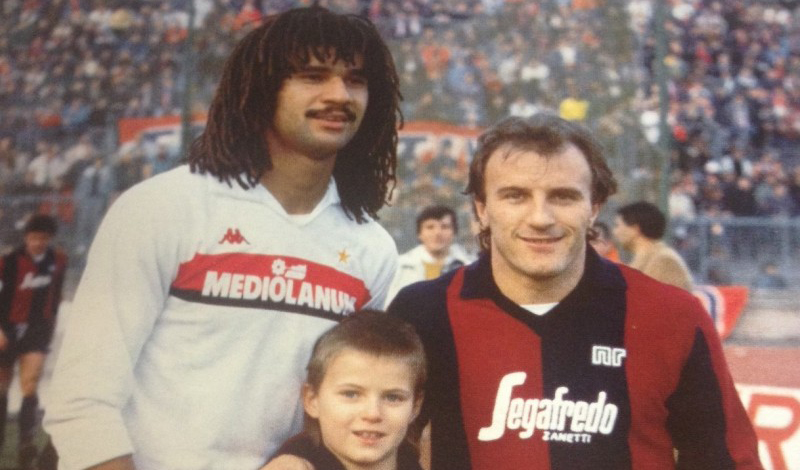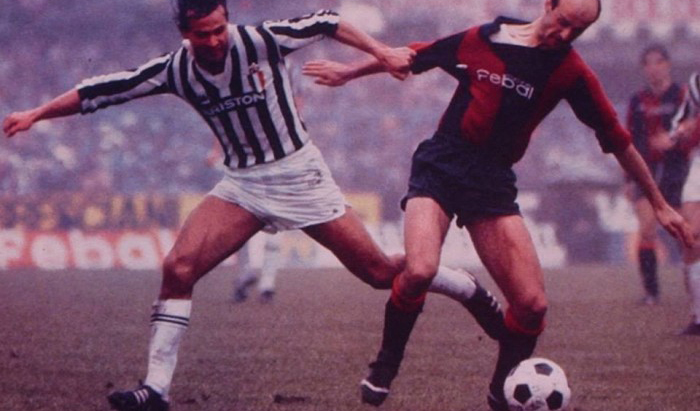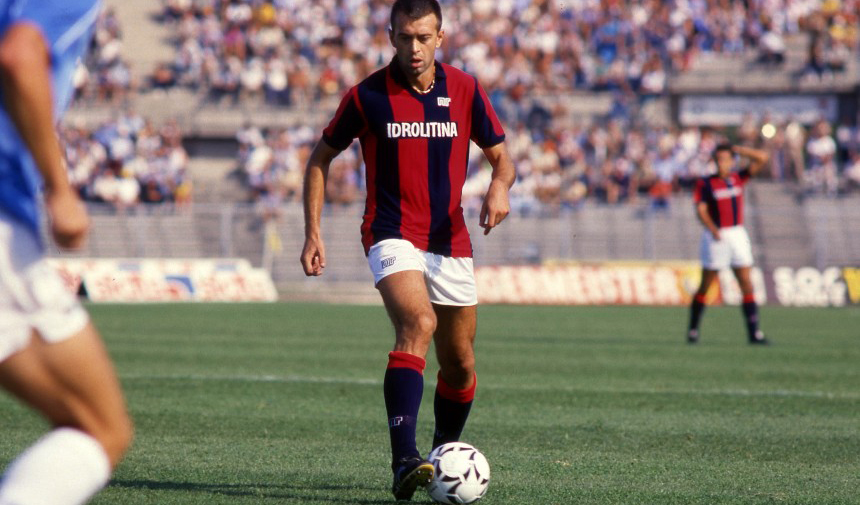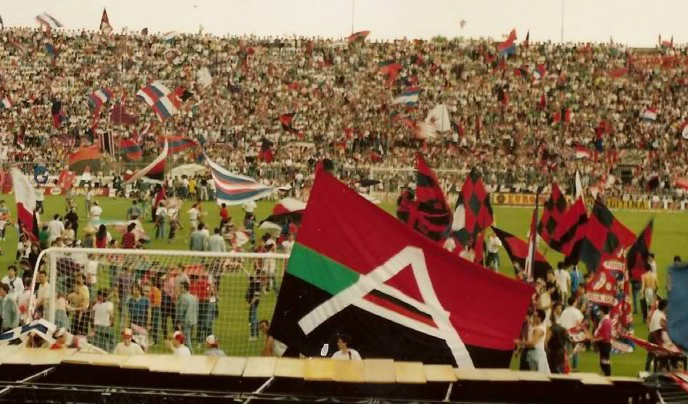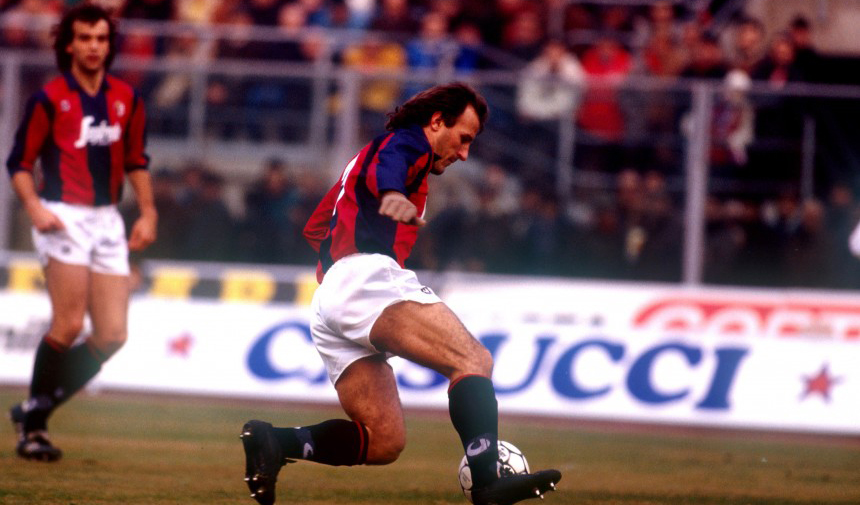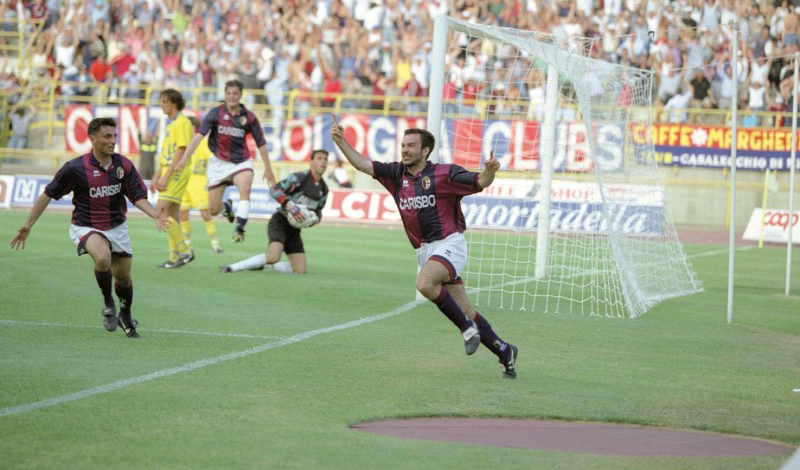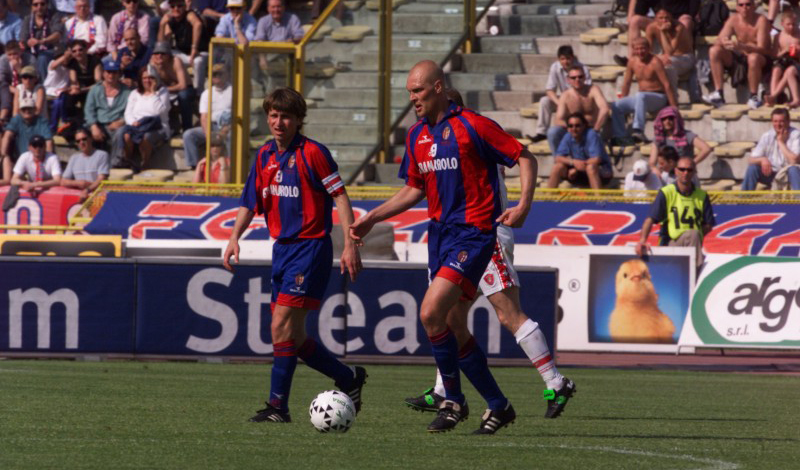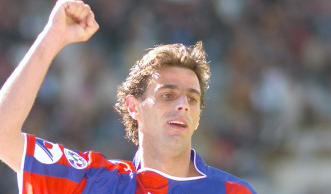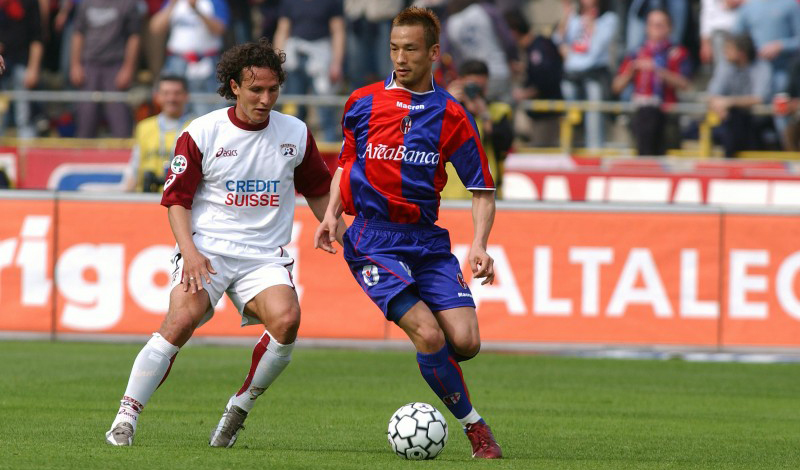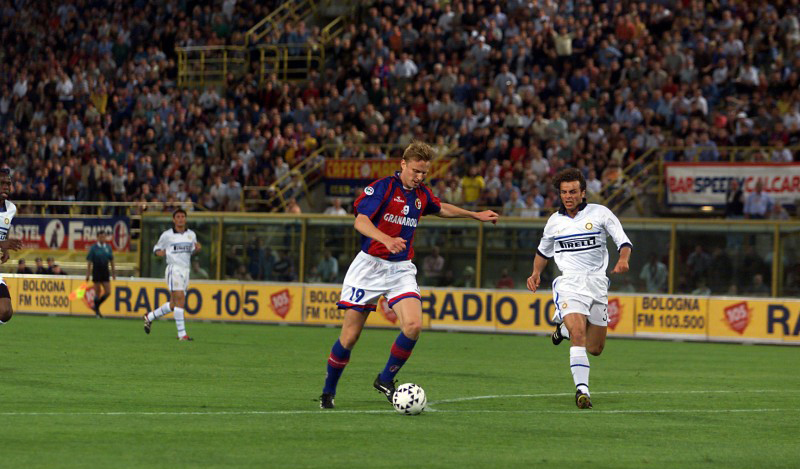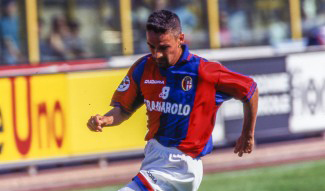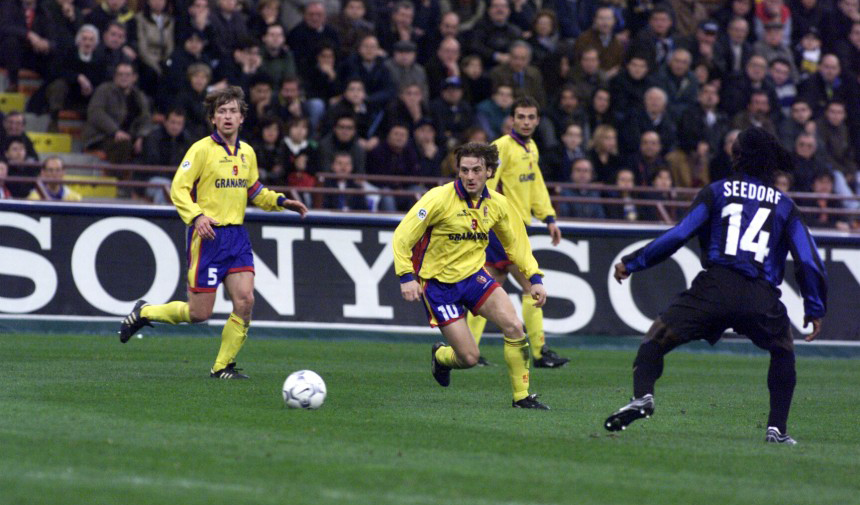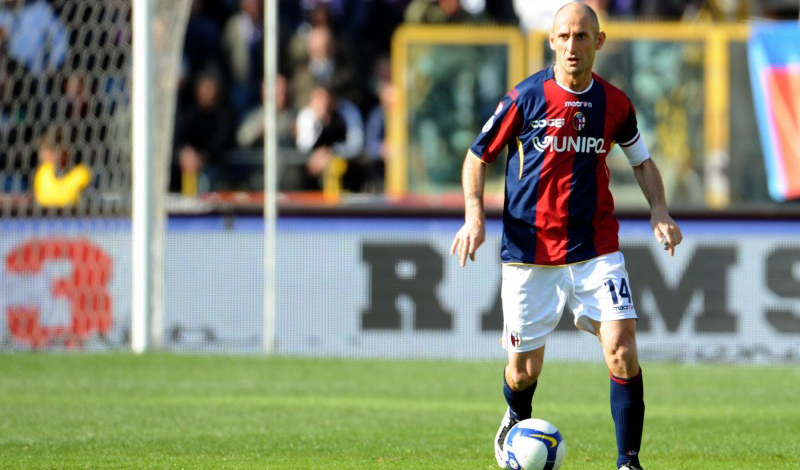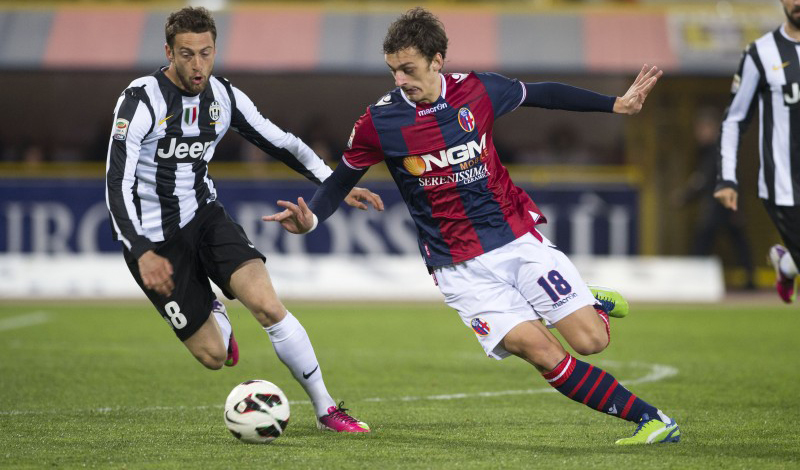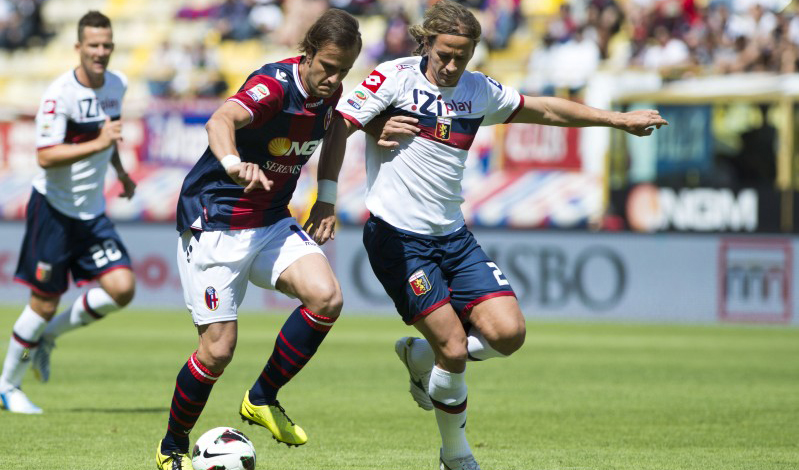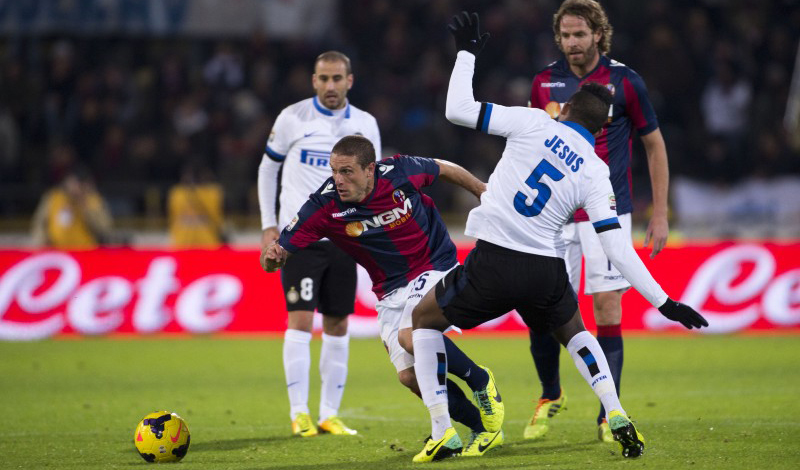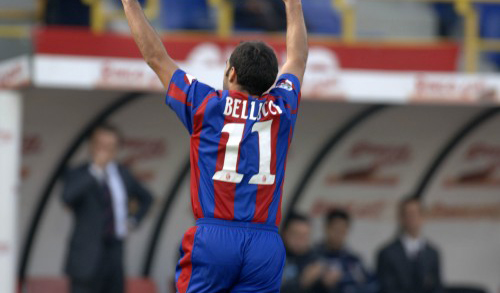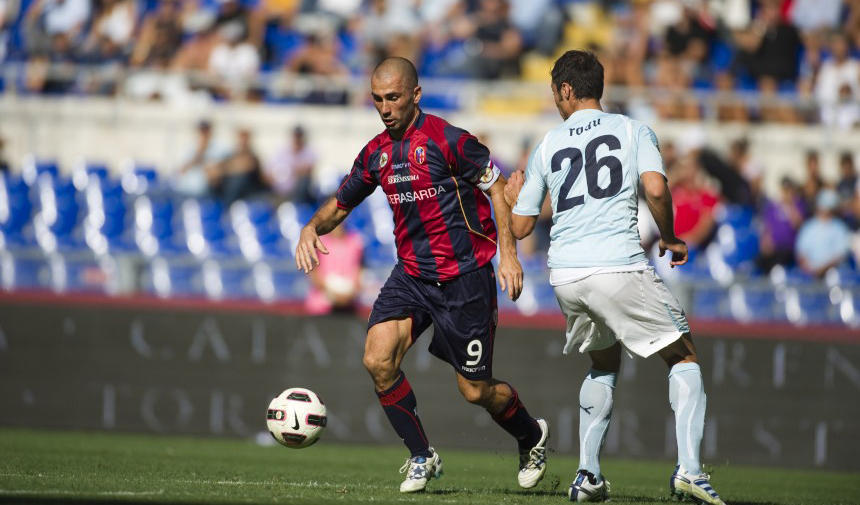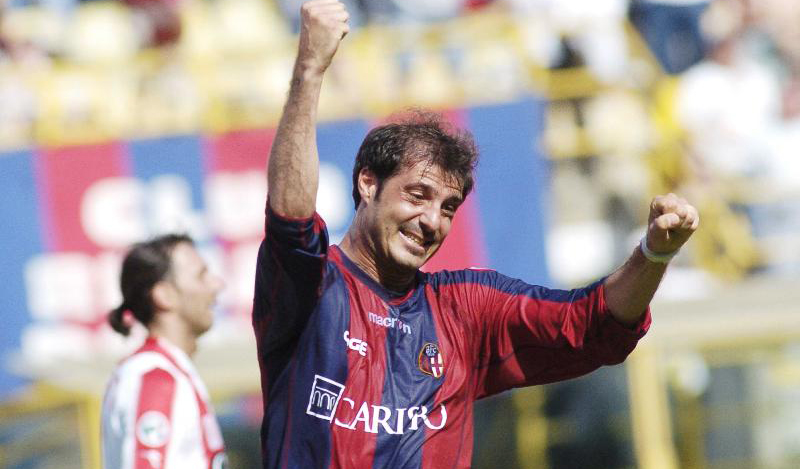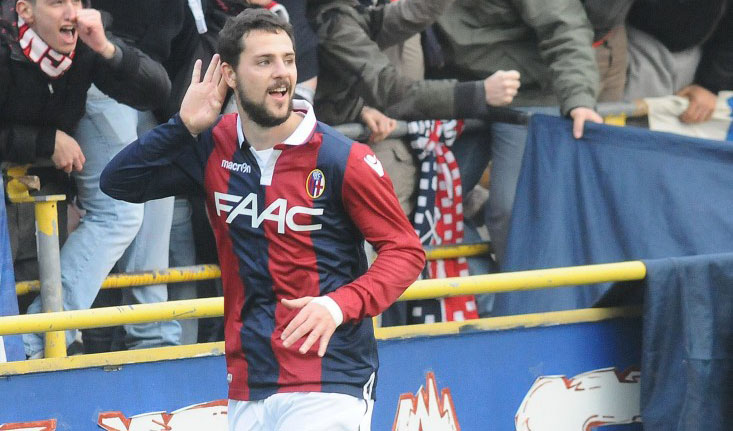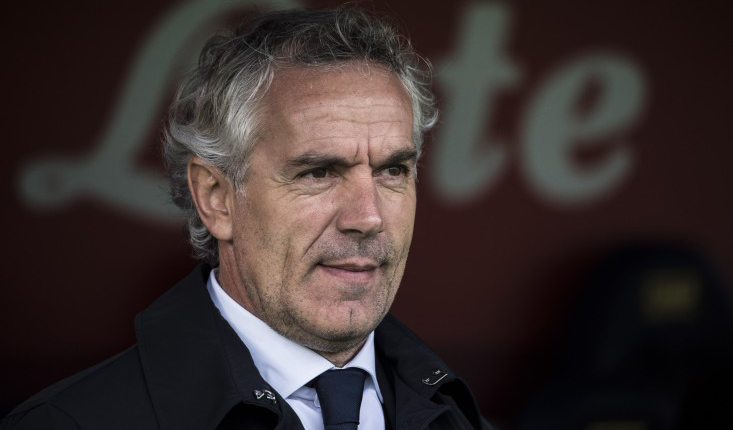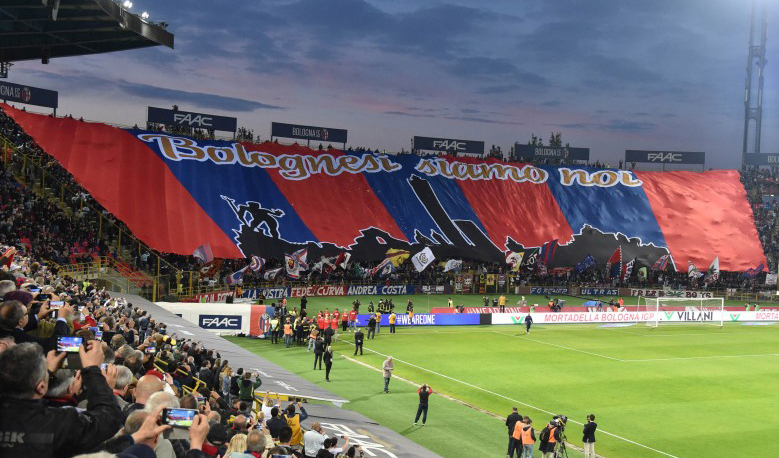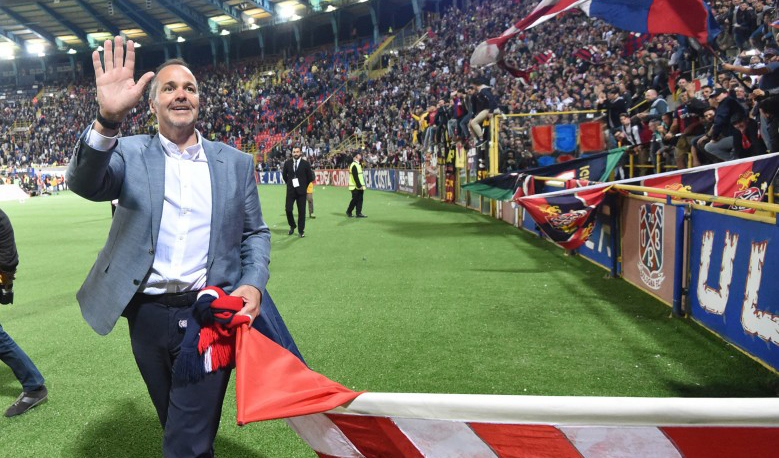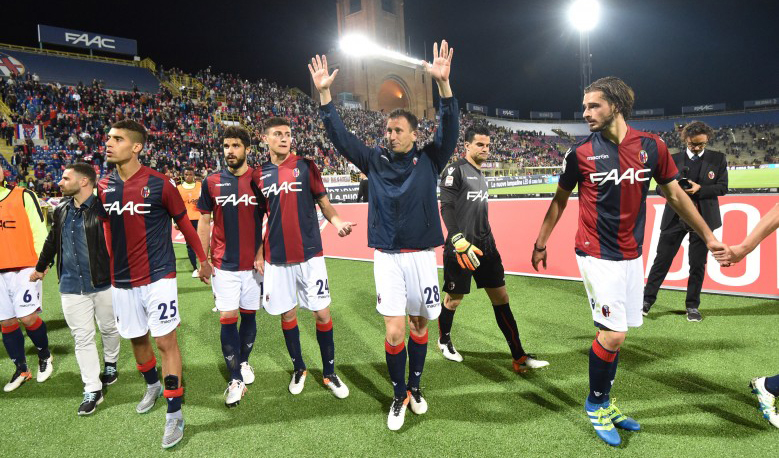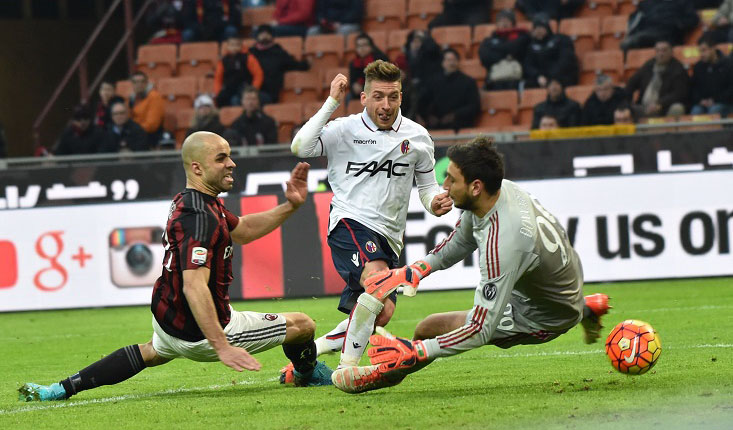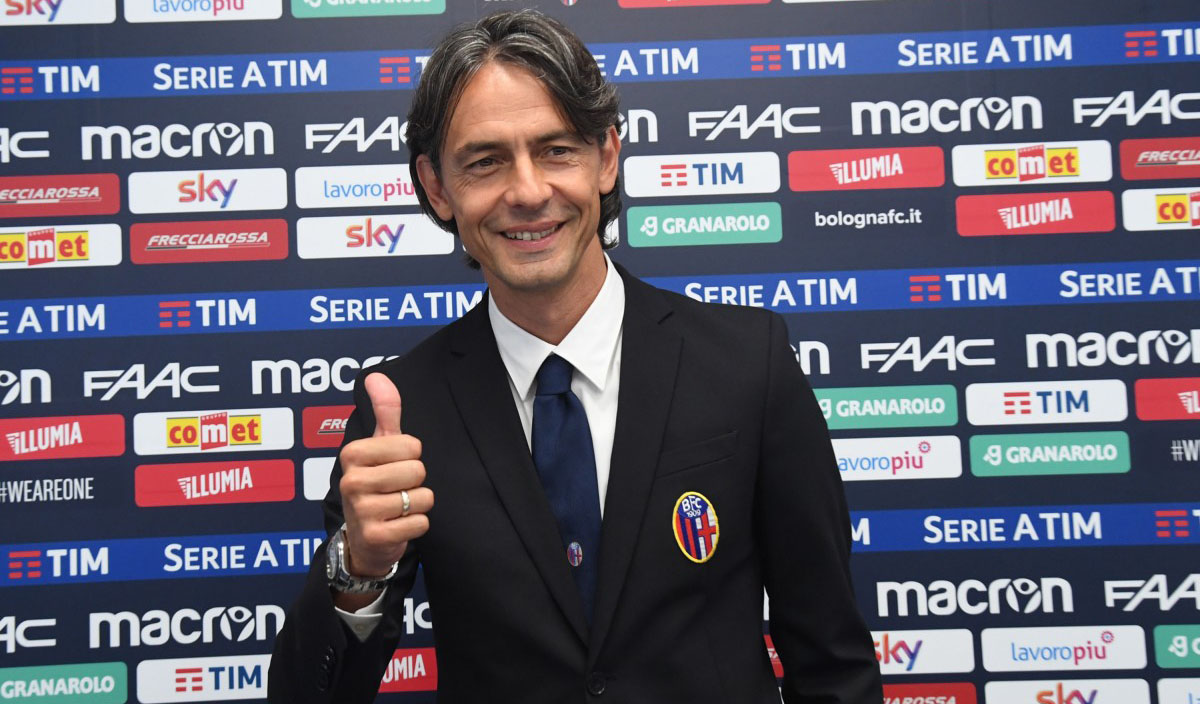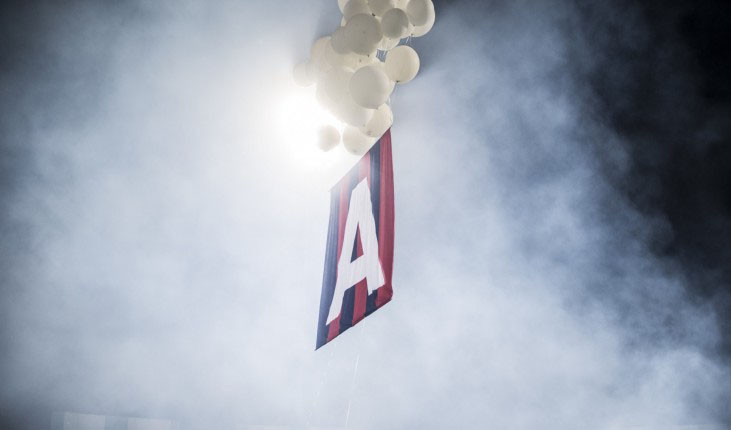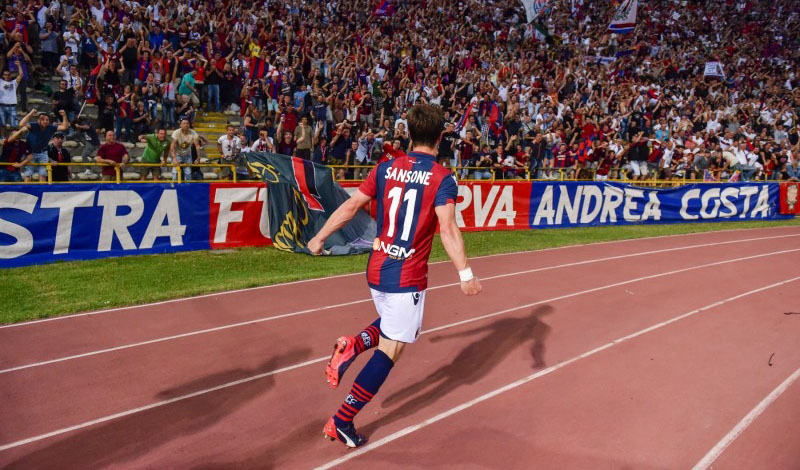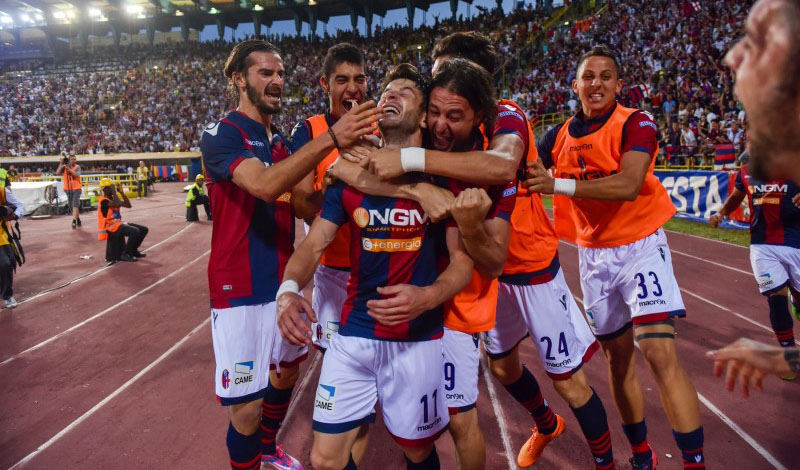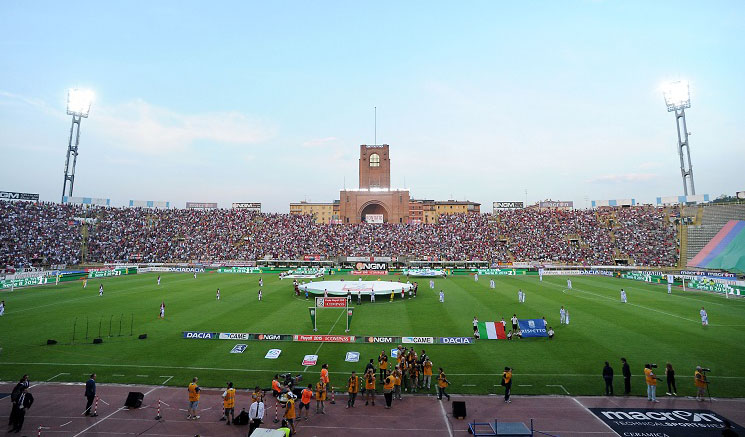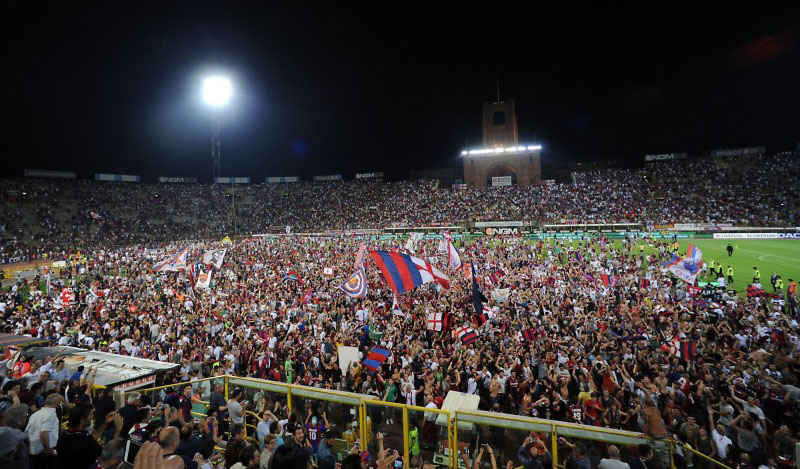History
The birth of Bologna F.C.
READ CLOSE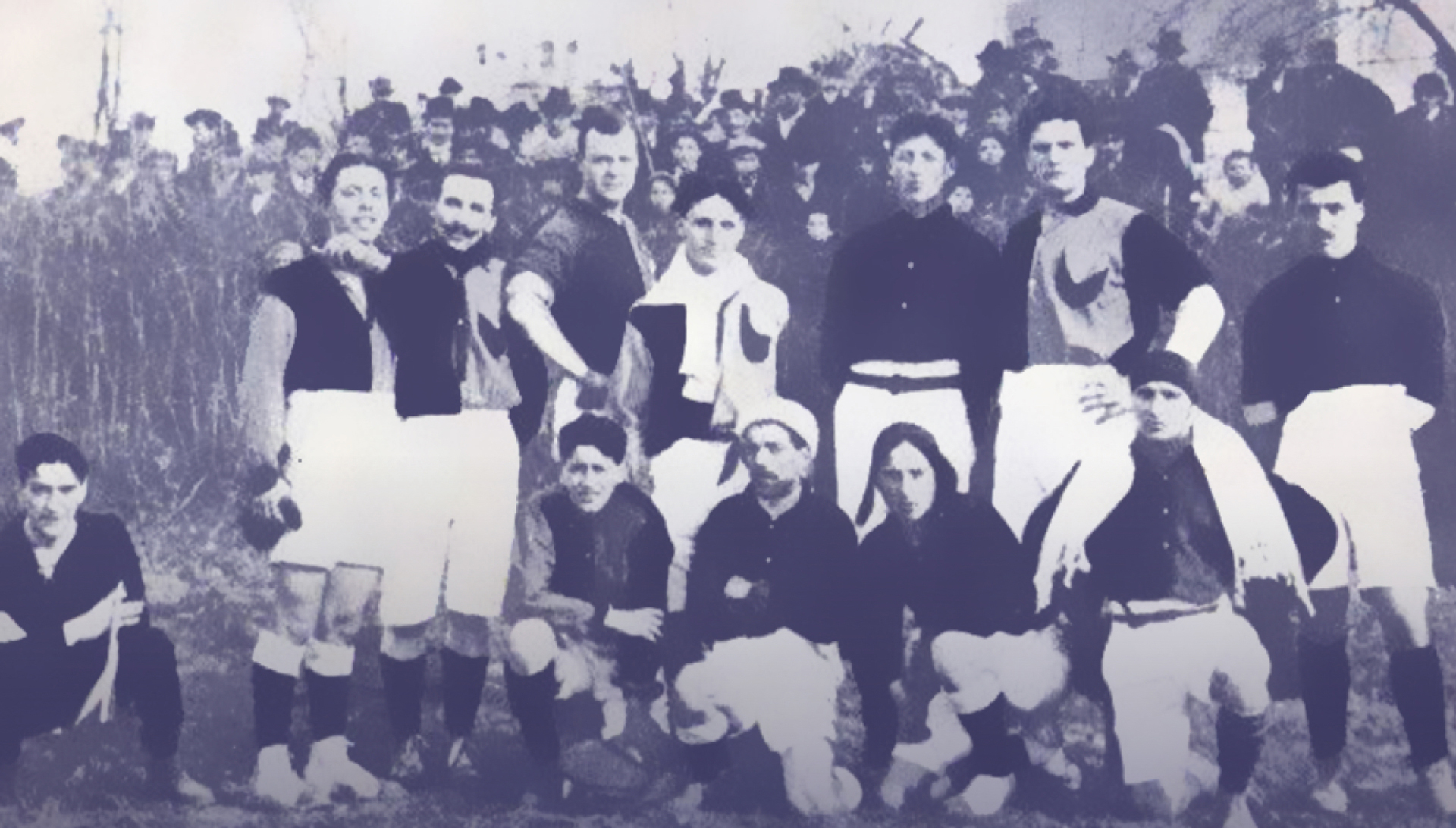
Bologna Football Club was officially founded on Sunday 3rd October 1909 at the Ronzani beer house on via Spaderia as the section for “sporting excursions in the open air ” of the Circolo Turistico Bolognese as reported by the Resto del Carlino the following day. Swiss dentist Louis Rauch was elected president but it was the young Bohemian Emilio Arnstein who had arrived in Bologna a year earlier who was the figure truly behind the initiative. He started looking for young people who shared his great passion for football as soon as he arrived in the city. He was told that in Prati di Caprara’s Piazza d’Armi that there were students and young people who were known by locals as “Those crazy ones who chase a ball,” so he went to meet them. They were the Gradi brothers, Martelli, Puntoni, Nanni, the aforementioned Rauch and Spanish college students Rivas and Antonio Bernabeu (brother of the legendary Real Madrid president Santiago). The club’s first captain Arrigo Gradi used to go to training with a shirt from the Swiss college Schoenberg in Rossbach where he studied. The shirt was in red and blue quarters so those colours became the club’s official kit.
In the winter of 1910, Bologna Football Club became independent and left Circolo Turistico. The kits were changed to vertical stripes but the original colours were kept. Professor Borghesani was elected as president by the assembly with Emilio Arnstein the vice president and Rauch made ‘trainer’ as coaches were then known. After a convincing victory in the Emilian championship which consisted of two afternoon games against Sempre Avanti (10-0) and Virtus (9-1), a crucial friendly versus Italian champions Inter was organised in May 1910. The Milan side won 1-0 in front of a large and enthusiastic crowd. Bologna’s good showing gave them the right to join the national league for the first time for the 1910/11 season. The adventure began with some respectable finishes in the regional groups while the club relocated, first to play at Cesoia on 26 February 1911 and then Sterlino which was inaugurated on 30 November 1913 with a 1-1 draw against Brescia. The brothers Emilio and Angiolino Badini became the the iconic players of the era, Emilio was the first Bologna player to represent Italy and Angelo was the captain/coach, and the pitch at Sterlino would be later be named in his honour. The war interrupted the club’s activities but at its end it took little time for Bologna to make their way into the inner circle of big clubs and the influence of Hungarian coach Felsner had a crucial impact on the club’s national ambitions.
The first Scudetto
READ CLOSE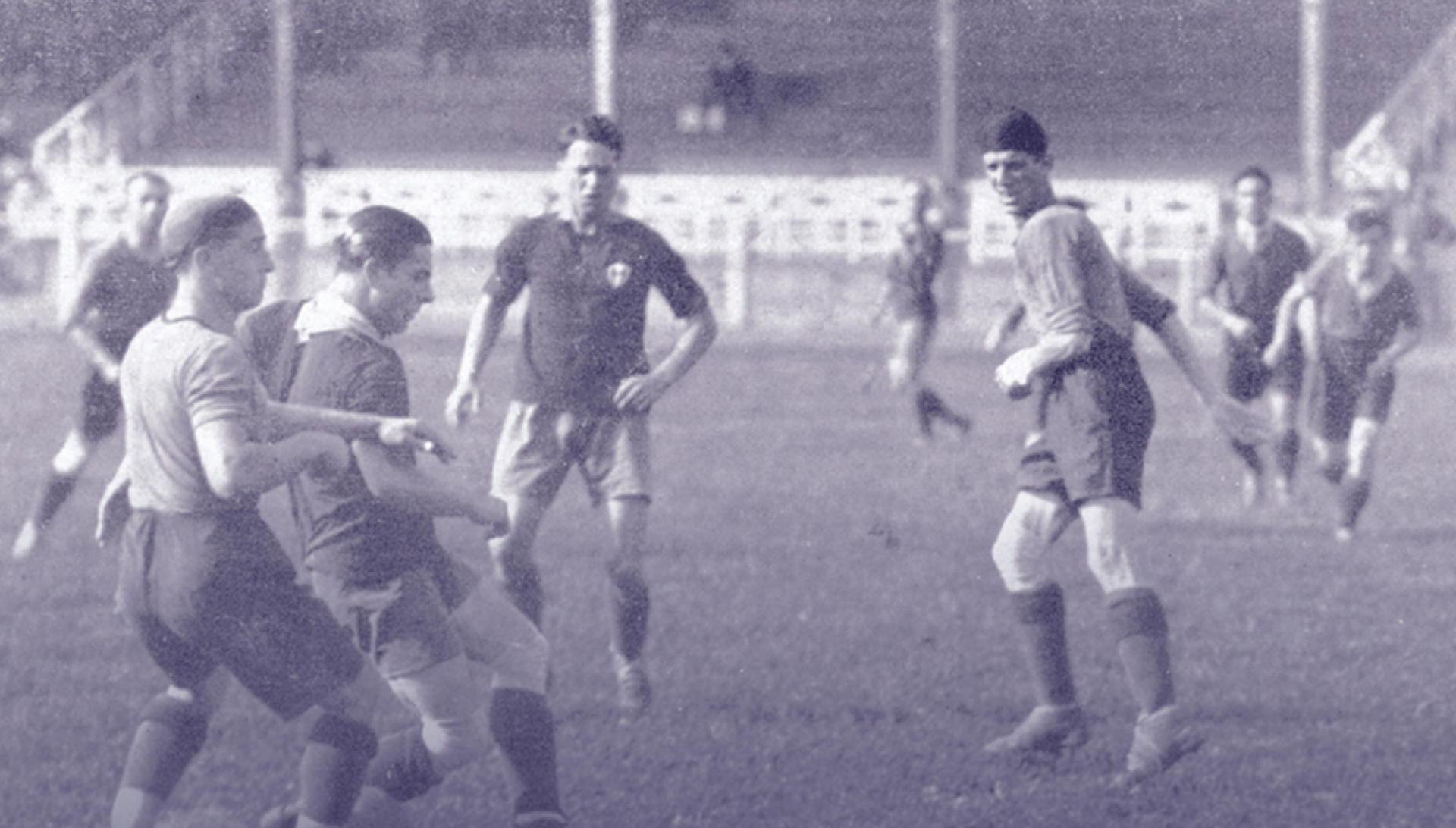
After losing the final for the 1920-21 Scudetto against Pro Vercelli, Angiolino Schiavio made his Bologna debut in 1922. He would become the greatest goalscorer in our history and our first Italian title followed in the 1924-25 season. Genoa were the main opposition and Bologna eventually progressed at the fifth attempt with a 2-0 win in a match held in Milan behind closed doors following previous crowd trouble in a fiery string of fixtures. Bologna played in green shirts for the first time with red and blue collars and victory was secured thanks to goals from Pozzi and Perin. The final against Alba Roma was just a formality as Bologna won 4-0 at home and 2-0 in Rome.
In the meantime, the influential local regime figure Arpinati oversaw the construction of the Littoriale Stadium to hold the thousands of Rossoblu fans after he had observed growing local enthusiasm for the team. On 29 May 1927, the stadium held its inaugural fixture between Italy and a Spain side which contained the legendary goalkeeper Zamora with the Azzurri running out as 2-0 winners. The first league game was held on 6 June of the same year as Bologna picked up a win to savour over traditional rivals Genoa with Martelli scoring to make it 1-0. Titles were not awarded in 1926 and 1927 for off-field reasons. The outgoing football association president did not wish to hand runners-up Bologna the accolade after Torino were stripped of the title because he wanted to avoid accusations of favouritism considering that Arpinati had been elected to take on the presidency. Angelo Schiavio was already the symbol of the team and a second Scudetto came in 1929 after a 1-0 win over Torino in the final held in Rome. Muzzioli scored after being set up by Schiavio who was the architect behind an unstoppable passage of play. The myth of Bologna and her star players had been created. As well as Schiavio, there was the goalkeeper Gianni who was known as the ‘Magic Cat’ for his acrobatic prowess, Della Valle was a relentless goalscorer and Perin was a skilful midfielder. In that period, the saying that “Bologna are a great team who make the whole world shake with fear” was born and it was a strong sign of the direction the club was heading in on both a national and continental level.
The magnificent 1930s
READ CLOSE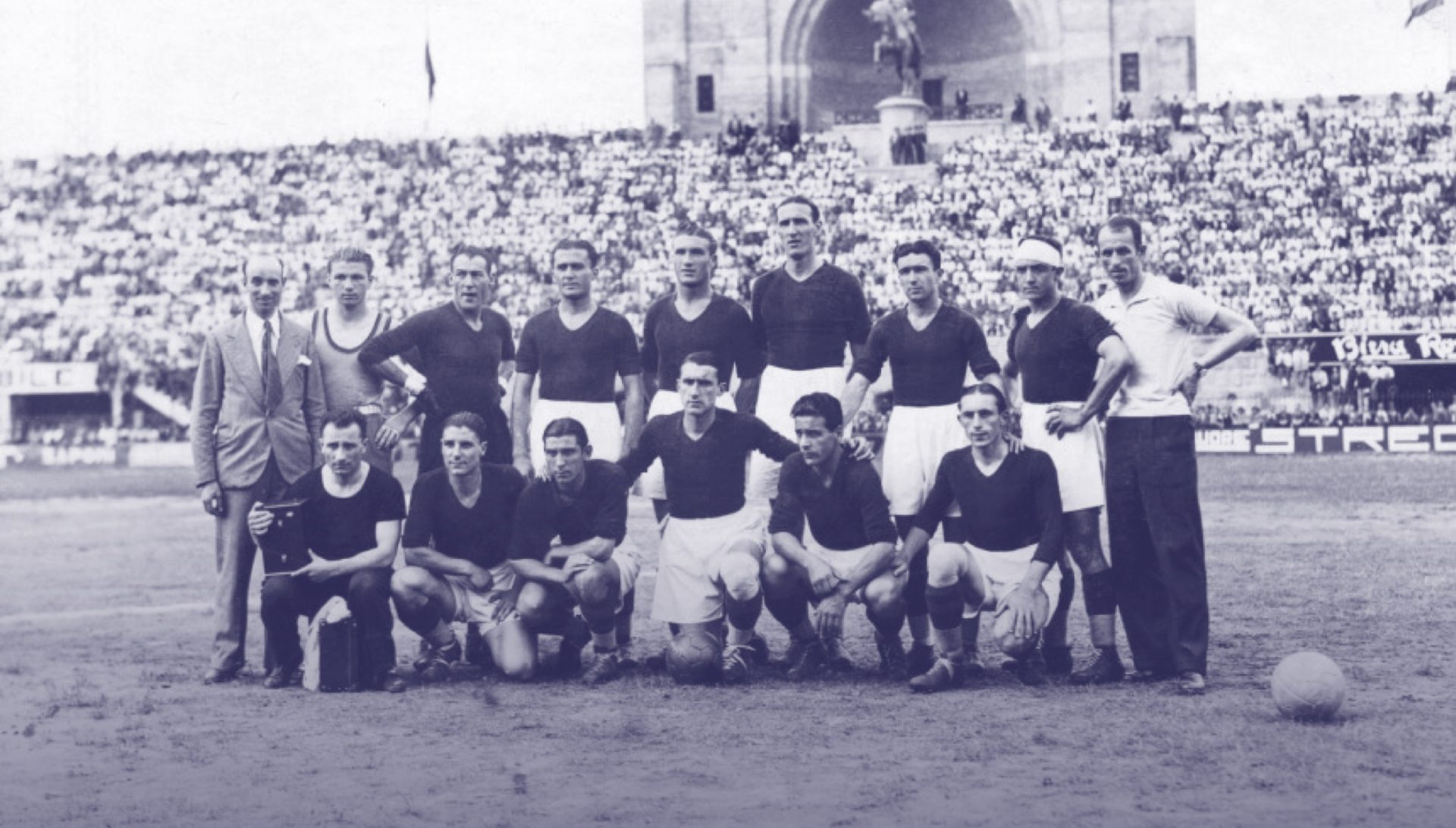
Bologna began the era of the single championship in 1929-30 with the Scudetto upon their glorious shirt. It was proudly shown off during a prestigious summer tournament in Latin America where they faced Juventus which foreshadowed a series of exciting clashes with the team who would become the main rivals for the league over the next decade.
New players came in from South America, most notable the legendary Uruguayans Fedullo and Sansone. The winger from Busto Arsizio Reguzzoni arrived and became a symbol of the club during 14 seasons at Bologna along with fellow wide players Monzeglio and Monsanto. With these new arrivals, a Rossoblu side, which was a already a great power in Italian football, proudly moved onto a European stage to take on the great sides from the Danube and later England. In 1932, we brought home our first Central European Cup title with the Hungarian master Lelovich at the helm after he replaced Felsner a few months earlier. The feat was repeated in 1934 with a win over Admira Vienna in the final. The club’s structure also changed greatly during this time of success as the industrialist from Reggio Emilia Renato Dall’Ara arrived first as a special commissioner before going on to become president. He was a wily and pleasure-loving figure who achieved excellent results during an extraordinary presidency which would last 30 years. Italy became world champions in 1934 with a goal from our Schiavio in the final and he would carry on at Bologna during a golden period: four league titles were won (1936, 1937, 1939, 1941). At the international competition which featured the best clubs in Europe for the 1937 Expo in Paris, another honour was claimed with a 4-1 win over Chelsea. Never before had a British team been beaten by continental opposition in the competition, let alone by such a convincing margin!
The coach who oversaw the club’s first triumphs, Ermanno Felsner, made his return in 1938 because the recently implemented racial laws forced the Jewish Arpaid Weisz (winner of three titles) to leave Italy as he faced a tragic destiny. The international Ceresoli took the place of Gianni in goal and the legend of Amedeo Biavati was born as he invented the stepover. The dummy on the dribble would leave opponents dumfounded so he could pick out the ‘golden head’ of Puricelli who boasted an impressive scoring record or a finish from Reguzzoni and he would become a World Cup winner in 1938 after taking on the mantle left to him by fellow Bologna man Schiavio who retired in order to dedicate himself to business concerns after having been a club icon for 18 years and setting an unbeaten record: 242 goals, all for the Rossoblu.
Only in Heaven do you play like that!
READ CLOSE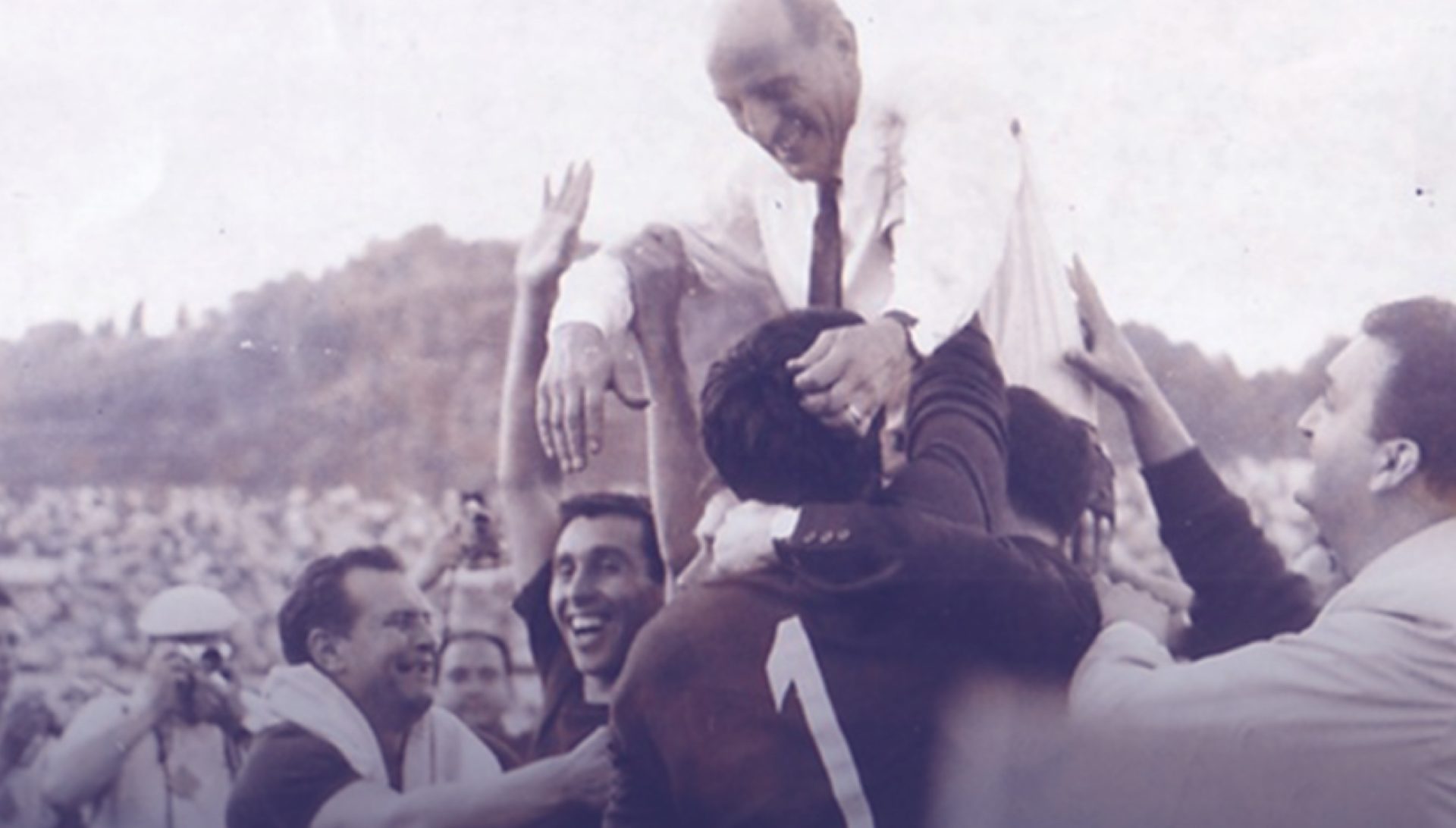
While an outbreak of worldwide conflict began elsewhere, at Bologna the post-war period began with Renato Dall’Ara still at the helm. In 1946-47 the illusion of having returned to greatness (seven games without conceding with Ferrari and then Vanz in goal) was shattered by a convincing defeat at the hands of the Grande Torino side although an eventual fifth-place finish was not a cause for despair. Those were the years of a moody, brilliant and irresistible goalscorer on his day: Gino Cappello. He gave consolation to the fans during mediocre seasons while paired with the local forward Cervellati. Bologna were stuck behind the teams from Milan and Turin and the club fell dangerously low in the table on a couple of occasions. The new signing of Gino Pivatelli, who was the top scorer in the 1955-56 season with 29 goals in 30 games and youngster Pascutti who marked his debut with a goal against Vicenza were held up as shining lights at a time when many foreign players failed to live up to expectations.
At the start of the 1960s, with the arrival of Bernardini on the bench, the creation of another winning group of players was underway. One by one, the raw talents Giacomo Bulgarelli, Romano Fogli and ‘The Doctor’ (as the cultured Bernardini was known) were brought into a side which already featured Pascutti and Pavinato. The coach was constantly pitted against the president who felt the style of play was attractive without being especially effective but eventually the team won the city and the fans over with two seasons of good football and a 7-1 win over Modena that led to the exclamation that “Only in heaven do you play like that!” It was the 1962-63 season that saw Pascutti set the record for the number of games in which he scored consecutively as he netted twelve times in ten matches. The arrival of star player Helmut Haller and the development of Danish centre forward Harald Nielsen (known as ‘Dondolo’) paved the way for a historic success the following season.
The problems in goal were resolved with the signing of international goalkeeper Negri and in the 1963/64 season, Bologna went on a run which took them to the top following a 2-1 win over AC Milan at the San Siro Stadium. There was a roller coaster of emotions as five players (Pavinato, Fogli, Tumburus, Perani and Pascutti) tested positive for banned substances. The players, coach and doctor were disqualified and Bologna received a three-point deduction. The city reacted by interpreting events as a conspiracy on the part of the main powers. Political, social figures and above all ordinary people took part in protests. Further tests later established Bologna’s innocence and the three-point deduction was revoked. Newly crowned European champions Inter and Bologna could not be separated in first place. For the only time in Italian football history, the title was to be settled by a playoff on 7 June 1964 in Rome. The great president Renato Dall’Ara died three days before the match while at the league’s offices with his Inter counterpart Angelo Moratti as they sorted the details for the playoff. With very heavy hearts, Bologna played a perfect game as they displayed shrewd tactics to win 2-0 and earn a sixth Scudetto after a 23-year wait thanks to goals from Fogli and Nielsen. One newspaper ran the headline “He [Dall’Ara] saw it and it made him happy!”
The 1970s
READ CLOSE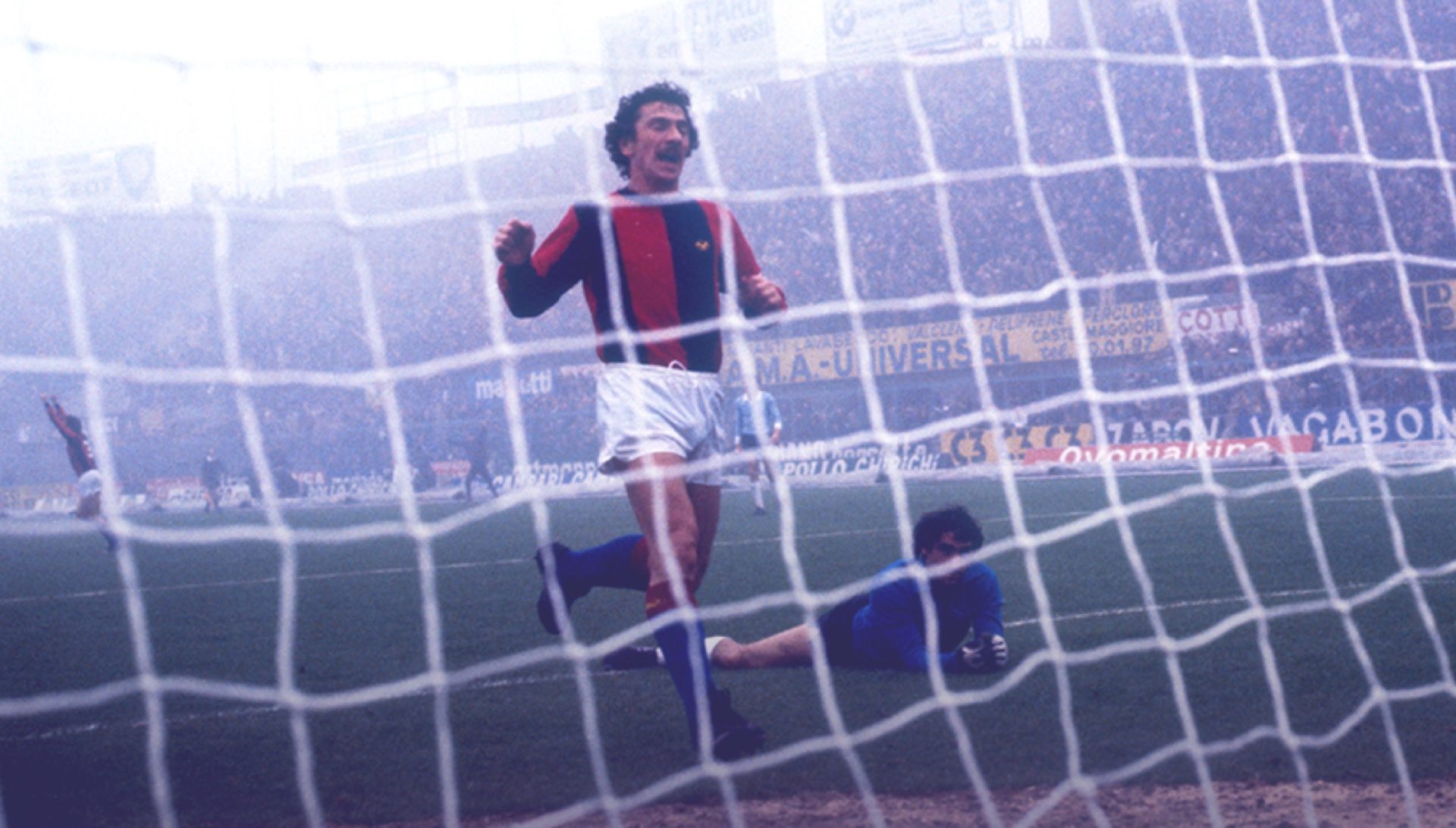
The following period was not simple, nor did it bring luck: the fixture with Anderlecht in the Cup Winners’ Cup ended in the Belgians’ favour after a playoff in Barcelona was cruelly settled by the toss of a coin. In the league, mixed results caused arguments and divisions in the squad while the disappointed fans became more distant. Fulvio Bernardini was sacked and things started over again with a new coach (Scopigno made a brief cameo before Carniglia took over) and positive results came quickly with second and third-place finishes. The heroes of 1964 gradually left over time and their replacements were not always as impressive. Bulgarelli stayed at Bologna but Nielsen and then Haller were sold while Pascutti and Negri saw age catch up with them as they were forced to retire.
Coaches and presidents came and went until the end of the 1960s when Edmondo Fabbri was on the bench to oversee a Coppa Italia final win over Torino (2-0) which came courtesy of a brace from Savoldi and the success would be replicated in 1974 with a penalty shootout win over Palermo (in Rome again, a traditionally happy venue for us). In 1974, Bologna icon Giacomo Bulgarelli’s long and celebrated career came to an end and he was the only player who could be compared to Schiavio in terms of service to the club. The baton was passed on to local boy Eraldo Pecci from Romagna who developed in the youth system but the midfielder of great character was hastily sold to Torino by president Conti. At the same time, the striker and new Bologna hero Giuseppe Savoldi was sold to Napoli for the staggering transfer fee of two billion Lire.
The supporters did not forgive president Conti for selling key players despite the unanimous respect held for the brilliant and elegant coach of the time Pesaola. After a series of seasons spent bouncing between fifth and eighth place, nerves started to fray and Cesarino Cervellati was frequently called upon to sort things out when all seemed lost. In the 1978-79 season, a 2-2 draw on the final day with Perugia kept the club up in the final spot above the relegation zone but another key player was then sold in the shape of the full-back Tazio Roversi. In the 1979-80 season, president Conti was replaced by Tommaso Fabbretti, Perani came in as the new coach and ‘Beppe-Gol’ made his return but the Rossoblu’s involvement in the Calcioscommesse scandal tainted a respectable season. The subsequent five-point deduction for next season made the achievements of coach Radice all the more impressive as he led the team to seventh following a number of big wins during a season to remember which gave no sign of what was to come next.
To hell and back again
READ CLOSE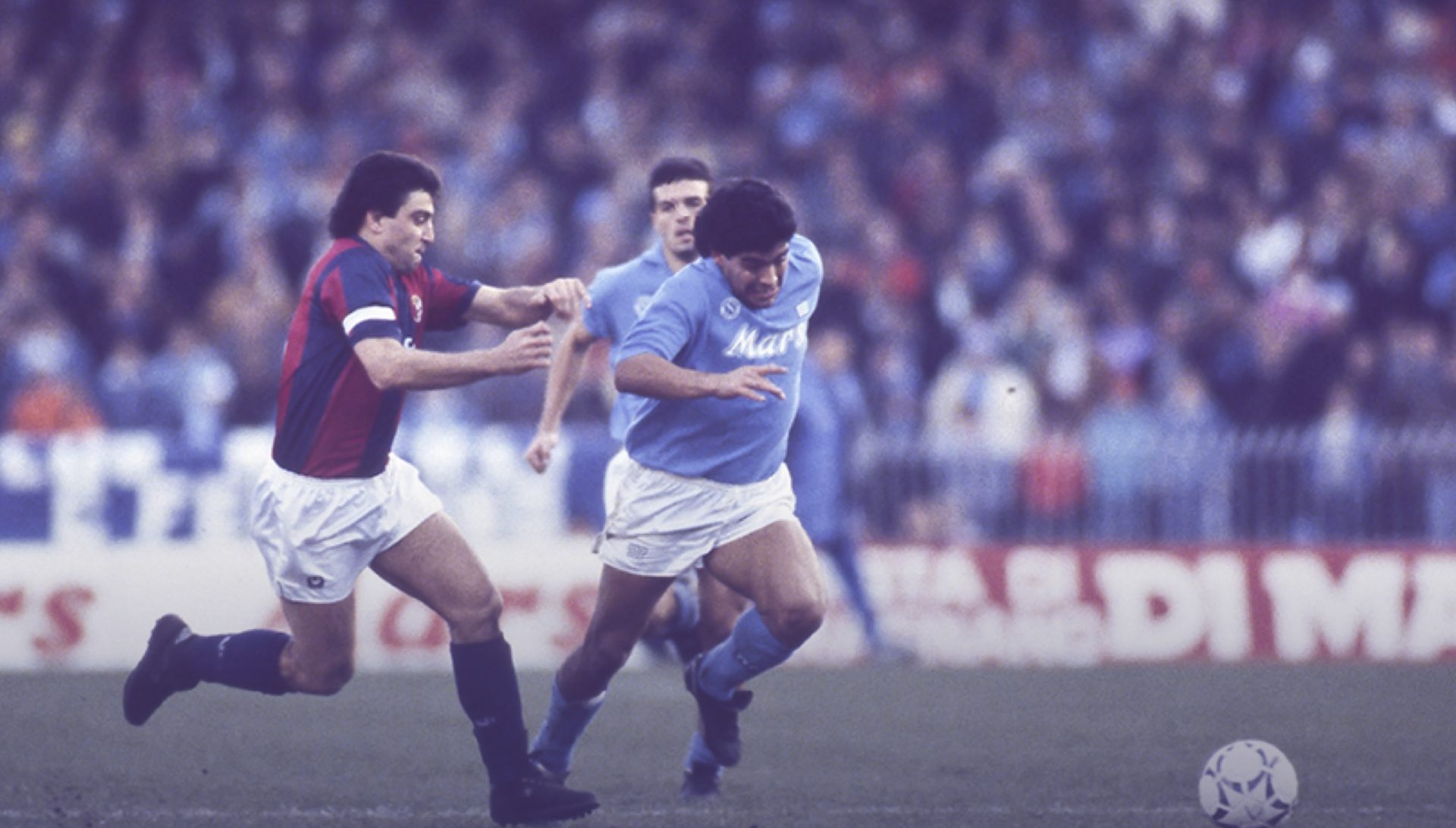
The world was turned upside down for the rossoblù at the Stadio Ascoli Piceno in the spring of 1982. In a season where the only chink of light for the club was the emergence of future star Roberto Mancini, Bologna suffered the humiliation of being relegated for the first time in their history and it didn’t end there. It had never happened up to this point but a further relegation to Serie C followed after just one year, much to the incredulity of the Bologna faithful who had had cause to dream of unlikely glory at several points during the 70s. Those dreams were now well and truly buried.
It was just too much, including for old Angiolino Schiavio, who wrote a fiery article in his daily column in the local paper expressing all his resentment towards those who had allowed the glorious rossoblù to fall so far. After an immediate and urgently required promotion back to Serie B in the ’83-84 season, several years went by when the team struggled to get out of the second division. Finally, in 1987-88, under the presidency of Corioni, youthful manager Gigi Maifredi overcame initial scepticism to take a scintillating Bologna back into the big time in the best way possible: a deserved first place delivered with style and plenty of goals. The club could breath again.
Back in Serie A, Bologna recovered after a difficult start to finish well clear of the drop zone and, the following year, Maifredi earned a UEFA Cup spot with the rossoblù before leaving for Juventus. ’90-91, however, saw another step in the wrong direction. The season started badly under manager Scoglio and was disrupted from start to finish by recurring injuries and lack of quality. As if that wasn’t enough, after two forgettable years and with the illusion that Bologna-born president Gnudi would take us back to the elite, the club once again fell into the hell of Serie C during the morbid days of the great Bologna’s demise in June 1993.
Re-birth under Gazzoni
READ CLOSE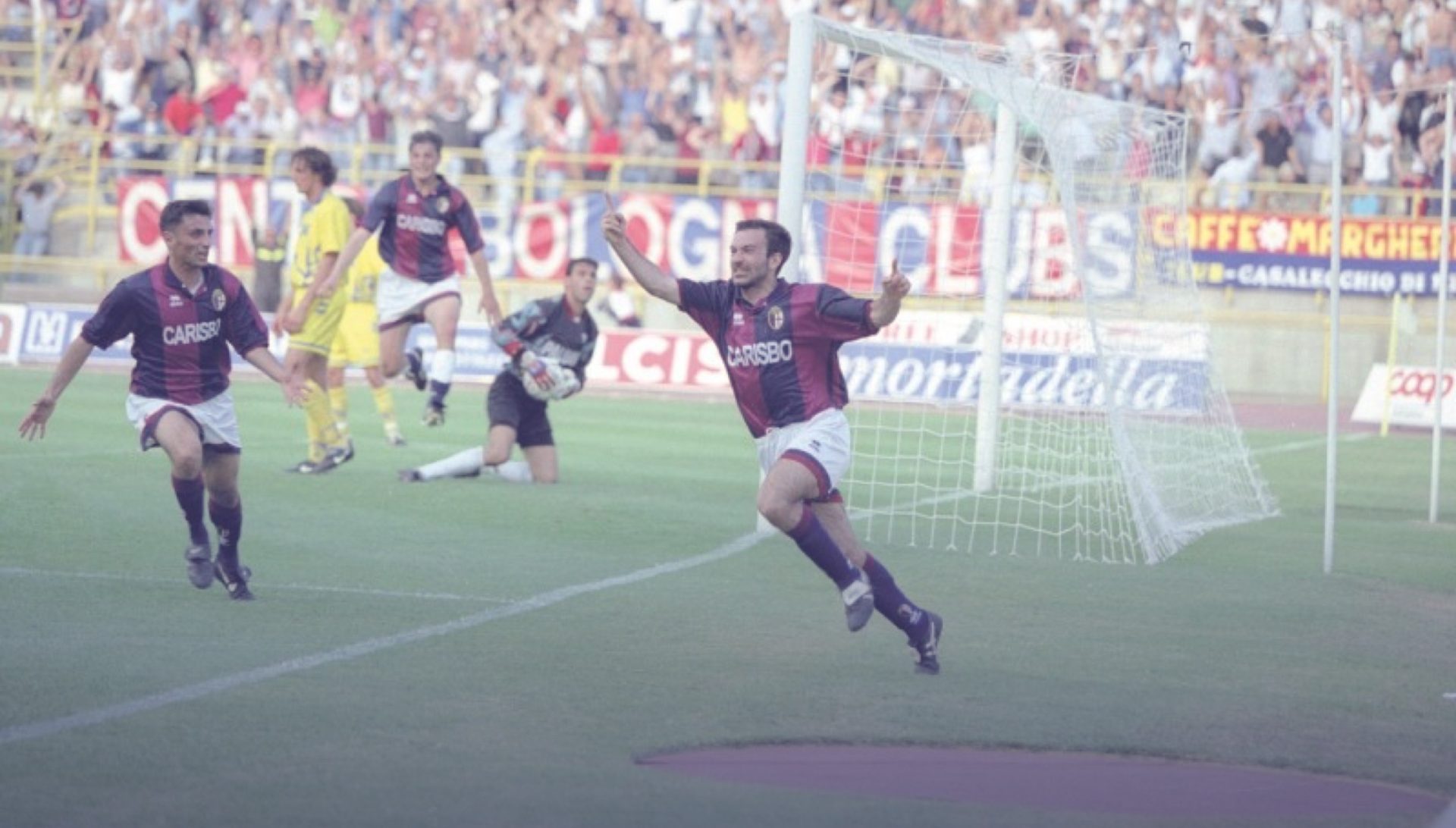
Following the demise of the original entity, Bologna FC 1909 was formed as a phoenix club and entered into Serie C1 for the 1993-94 season with Giuseppe Gazzoni Frascara as president, Zaccheroni as manager and Pecci as sporting director. On-field ambitions were thwarted in the play-offs against SPAL resulting in a big overhaul, but, under the guidance of Oriali and Ulivieri as coach and director of football, the club went on to win the league at a canter the following season to secure promotion to Serie B. 12 months later, the team were celebrating another promotion in June 1996 when Giorgio Bresciani ‘s unforgettable goal in added time at home to Chievo won a second consecutive title for the rossoblù. The first season back in Serie A was a stunning success with Bologna finishing a deserved 7th in the league, Ulivieri’s men being lauded for their style of football and a cruel, unmerited exit from the Coppa Italia against Vicenza at the semi-final stage.
The following year, the fourth under Ulivieri, Bologna finished 8th in the league thereby securing an Intertoto Cup place but the year will be remembered as Roberto Baggio‘s season with the rossoblù. Baggio’s signing was something of a coup for Gazzoni and Oriali and the “Divine Ponytail” had an outstanding individual campaign as he aimed to make the Italy World Cup squad whilst propelling his club up the table with the aid of team mates Andersson and Kolyvanov who will surely go down as Bologna’s most popular overseas players of all time. In 1998-99, now led by Carletto Mazzone, Bologna won the Intertoto Cup by beating Polish side Ruch Chorzow in the final. This was the club’s first major trophy of any kind since the 1974 Coppa Italia triumph. Helped along by a series of wonder goals from leading marksman Beppe Signori, the Intertoto Cup win also set in motion a fantastic European adventure. Having earned plaudits all over the continent, Bologna’s UEFA Cup ended in painful and unjust defeat in the last four as Marseille benefited from a late, controversial penalty to go through to the final. Unfortunately, the squad went on to suffer a similarly cruel exit to Fiorentina in the semi-finals of the Coppa Italia. Nevertheless, it was a great team which played arguably the most attractive football of the last few decades thanks to a core of highly talented individuals including several players already mentioned as well as the talismanic Nervo; stalwarts Ingesson, Marocchi, Paramatti, and goalkeeper Antonioli who then made way for the great Gianluca Pagliuca. After a long struggle, Gazzoni had succeeded in reviving the club’s fortunes and Bologna had once again earned the admiration and respect of footballing community.
Francesco Guidolin then took the reins and consistently led the team to respectable mid-table finishes over the next few seasons. The summer of 2001 was a mixed period for the club as Gazzoni ceded the presidency to Renato Cipollini, but Guidolin, spurred on by the disagreements which led to Gazzoni’s exit, finally succeeded in forging a Bologna in his own image: tough, highly organised, possessing a great team spirit and a never-say-die attitude. Through sheer endeavour and their excellence as a unit, Bologna were on course for a Champions League position until the final day of the season when a defeat at Brescia scuppered their chances in a season when the race for the Champions League and the UEFA Cup went down to the wire. The rossoblù were left with the consolation prize of an Intertoto Cup spot but went on to lose the final against Fulham in London in August 2002 despite Beppe Signori‘s brace. The captain and centre forward is now a symbol of the years of success between the 1990s and the early 21st century. These however were the first signs of a new period of decline which, after a couple of ignominious scraps to stay up, finally culminated in agonising relegation following a dramatic play-off defeat to Parma in June 2005.
The new millenium
READ CLOSE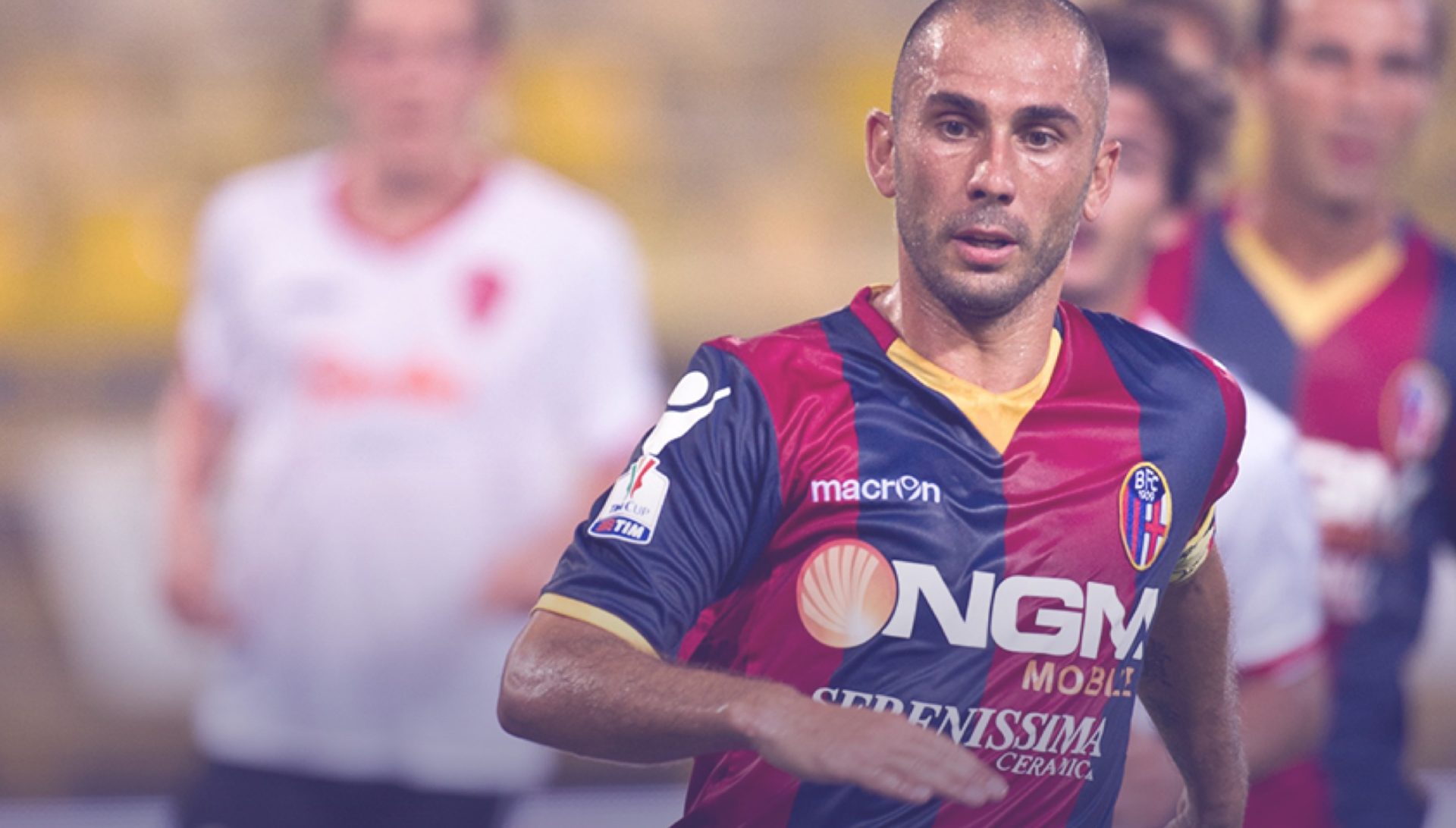
Alfredo Cazzola, a well-renowned local businessmen with a keen interest in sport, bought the club from Gazzoni but needed three seasons in Serie B before he could bring Bologna back into the top division. The club reached Serie A again in 2008, just in time to celebrate the club’s centenary in the surroundings it deserved. Promotion was achieved thanks to a combination of the management of Romagna-native Arrigoni and the goals of striker Massimo Marazzina who then surrendered his place in the starting line up to Marco Di Vaio once the team was in Serie A. Di Vaio swiftly became a symbol of the era and the chief protagonist of a series of relegation dogfights under the unstable stewardship of Menarini and Porcedda.
Sardinian Sergio Porcedda‘s time in charge of the club was both brief and unfortunate. After the rossoblù suffered a penalty for failure to pay wages and financial contributions, the Comitato Bologna 2010 came to the stricken club’s aid in December 2010. This was a group of local business owners led alternately by Zanetti, Pavignani and Guaraldi. These were seasons of weekly grind and tempered ambitions apart from the 2011-12 campaign which saw a ninth-placed finish thanks to a methodical young coach from Parma, Stefano Pioli, who continued to benefit from the goals of the evergreen Di Vaio. The striker was now enjoying a second youth at Bologna following several spells with top-level clubs both in Italy and abroad and, in the process, he earned himself a place in the hearts of Bologna supporters as the bright spark of an otherwise very mediocre period.
Then, once “SuperMarco” had left after four years of leading the line for Bologna, the period culminated in the arduous 2013-14 season which started badly resulting in the replacement of Pioli with Ballardini but then only proceeded to get worse. The end result was the fourth relegation to Serie B in club history. To think that, until 1982, we shared the accolade of never having been relegated along with Inter Milan and Juventus…
Bologna under Saputo
READ CLOSE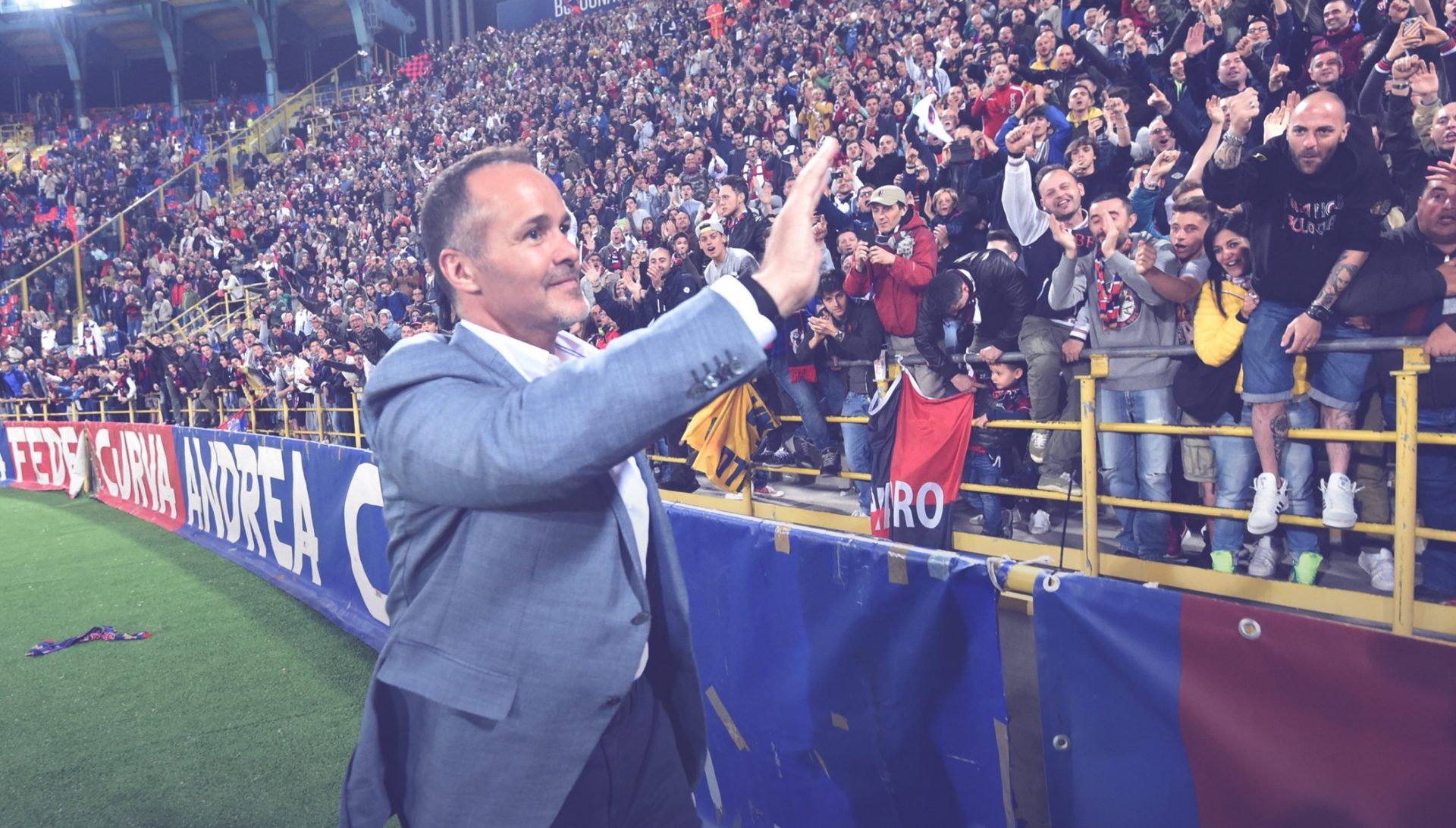
The 2014-15 season kicked off with Uruguayan coach Diego Lopez at the helm after the club hierarchy hired him with the brief of securing an immediate return to Serie A. With the first half of the season ongoing, October saw a further change of personnel in the upper echelons of the club following a long series of drawn-out negotiations.
The new, international-flavoured set-up saw the arrival of a group of North American investors led by Canadian businessmen Joey Saputo (who would soon assume complete control of the club) and New York lawyer Joe Tacopina with Claudio Fenucci returning as managing director and Pantaleo Corvino taking over as sporting director. There was also a happy and prestigious return for Marco Di Vaio as club manager after the former Bologna striker had hung up his boots following the end of his playing career in Canada. The rossoblù began a new chapter in style as the supporters started to justifiably dream of glory and the club instantly achieved its number one priority for rebuilding. After Delio Rossi‘s men triumphed in four compelling matches in the play-offs against Avellino and Pescara, Bologna sealed another promotion to Serie A on the 9th June 2015.
Following a difficult start to the season, Rossi was replaced by Roberto Donadoni in order to secure Serie A status for the club. A long-term future in the top flight is another well-established and unavoidable step in Bologna’s development.
